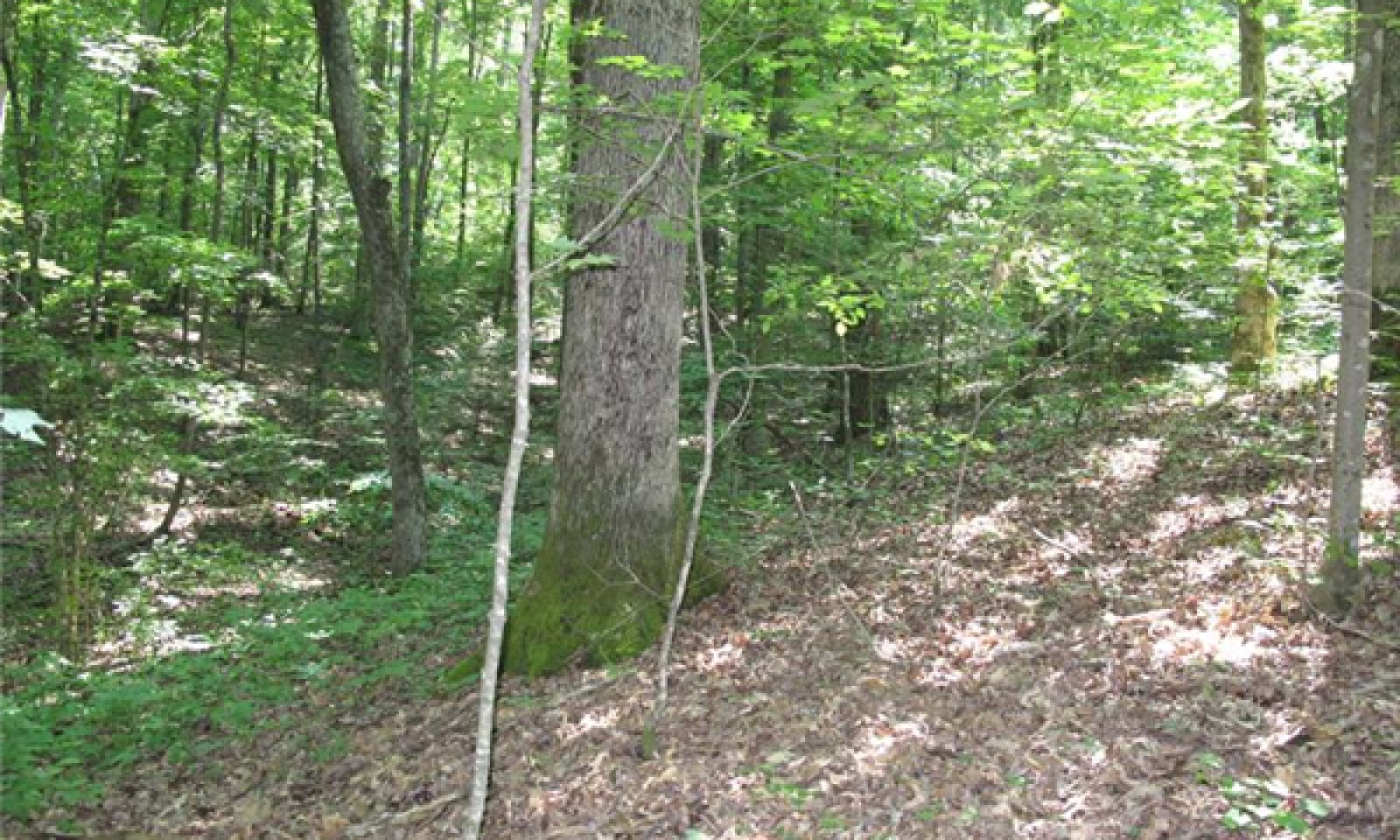

Natural Resources
Conservation Service
Ecological site F128XY001TN
Thermic Cherty Dolomite Upland Oak-Hickory Forest
Accessed: 12/21/2025
General information
Approved. An approved ecological site description has undergone quality control and quality assurance review. It contains a working state and transition model, enough information to identify the ecological site, and full documentation for all ecosystem states contained in the state and transition model.
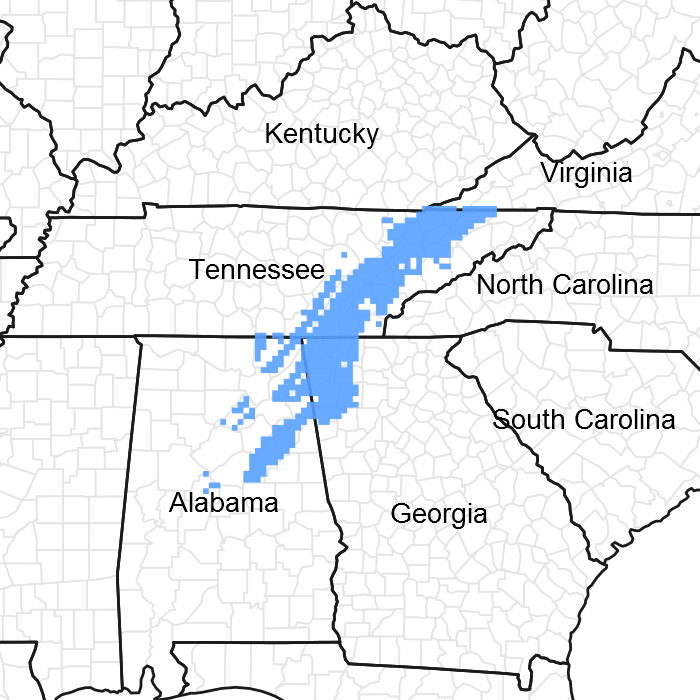
Figure 1. Mapped extent
Areas shown in blue indicate the maximum mapped extent of this ecological site. Other ecological sites likely occur within the highlighted areas. It is also possible for this ecological site to occur outside of highlighted areas if detailed soil survey has not been completed or recently updated.
MLRA notes
Major Land Resource Area (MLRA): 128X–Southern Appalachian Ridges and Valleys
Major Land Resource Area (MLRA) 128, shown as the area shaded in gray on the accompanying figure, falls into the East and Central Farming and Forest Region. This MLRA is in Tennessee (36 percent), Alabama (27 percent), Virginia (25 percent), and Georgia (12 percent). It makes up about 21,095 square miles (54,660 square kilometers).
Most of this MLRA is in the Tennessee section of the Valley and Ridge province of the Appalachian Highlands. The thin stringers in the western part of the area are mostly in the Cumberland Plateau section of the Appalachian Plateaus province of the Appalachian Highlands. A separate area of the MLRA in northern Alabama is in the Highland Rim section of the Interior Low Plateaus province of the Interior Plains. The western side of the area is dominantly hilly to very steep and is rougher and much steeper than the eastern side, much of which is rolling and hilly. Elevation ranges from 660 feet (200 meters) near the southern end of the area to more than 2,400 feet (730 meters) in the part of the area in the western tip of Virginia. Some isolated linear mountain ridges rise to nearly 4,920 feet (1,500 meters) above sea level.
The MLRA is highly diversified. It has many parallel ridges, narrow intervening valleys, and large areas of low, irregular hills. The bedrock in this area consists of alternating beds of limestone, dolomite, shale, and sandstone of early Paleozoic age. Ridgetops are capped with more resistant carbonate and sandstone layers, and valleys have been eroded into the less resistant shale beds. These folded and faulted layers are at the southernmost extent of the Appalachian Mountains. The narrow river valleys are filled with unconsolidated deposits of clay, silt, sand, and gravel.
Classification relationships
This site falls into the "Southern Limestone/Dolomite Valleys and Low Rolling Hills" ecoregional classification developed by the Environmental Protection Agency (Authors: Glenn Griffith, James Omernik, Sandra Azevedo).
The USGS-based Southeast GAP Analysis Project classifies this area under two major forest types: South-Central Interior Mesophytic Forest (CES202.887) and Southern Ridge and Valley/Cumberland Dry Calcareous Forest (CES202.457).
Ecological site concept
The Cherty Dolomite Upland Oak-Hickory Forest ecological site (in red) constitutes a high percentage of this MLRA. This site is primarily forested with mixed hardwoods, currently dominated by oak and hickory. It is characterized by rolling topography with gently sloping to very steep upland hills. Ridges are typically wider and lower in elevation than other ridges in the MLRA. Some of the oldest and most highly leached soils of the MLRA occur on this ecological site.
Table 1. Dominant plant species
| Tree |
(1) Quercus alba |
|---|---|
| Shrub |
(1) Cercis canadensis |
| Herbaceous |
(1) Vitis rotundifolia |
Physiographic features
This ecological site occurs on summits, shoulders, and backslopes on dissected uplands weathered from cherty dolomitic limestone. Slopes are 2 to 60 percent. Elevation ranges from 500 to 2,130 feet. The topography ranges from ridges to rolling hills.
This site can generate runoff to adjacent, downslope ecological sites. This site does not flood.

Figure 2. Example Block Diagram for Cherty Dolomite Upland
Table 2. Representative physiographic features
| Landforms |
(1)
Ridge
(2) Hill |
|---|---|
| Flooding frequency | None |
| Ponding frequency | None |
| Elevation | 500 – 2,130 ft |
| Slope | 2 – 60% |
| Water table depth | 60 in |
| Aspect | SE, SW, NW |
Climatic features
This area falls under the humid, mesothermal climate classification (Thornwaite, 1948). Precipitation is fairly evenly distributed throughout the year, with little or no water deficiency during any season. The average annual precipitation in most of this area is 45 to 55 inches. It increases to the south. Maximum precipitation occurs in midwinter and midsummer, and the minimum occurs in autumn. Most rainfall occurs as high-intensity, convective thunderstorms. Snowfall may occur in winter. Average annual temperatures range from 46 to 70 degrees F, increasing to the south. The freeze-free period averages 205 days and is longest in the southern part of the area and shortest at higher elevations to the north. The growing season corresponds to climate. Local climate can be variable and microclimates factor into the distribution of plants. In general, topographic features such as slope aspect, landform, steepness, and position of the ridges and valleys are important site variables in the distribution of vegetation across the landscape (Martin, 1989).
Table 3. Representative climatic features
| Frost-free period (average) | 172 days |
|---|---|
| Freeze-free period (average) | 195 days |
| Precipitation total (average) | 53 in |
Figure 3. Monthly precipitation range
Figure 4. Monthly average minimum and maximum temperature
Figure 5. Annual precipitation pattern
Figure 6. Annual average temperature pattern
Influencing water features
This site is not influenced by water from a wetland or stream.
Soil features
This ecological site is represented by soils in the Ultisols soil order. Major soil series for this ecological site are Pailo, Bodine, Fullerton, and Minvale. Map units having these soils as both major and minor components, either in consociations or complexes, make up the majority of the ecological site. These soils have a thermic temperature regime and an udic moisture regime. They are extremely deep, well drained, highly weathered, and acidic. Soils associated with this ecological site formed in colluvium or soil creep, over the underlying residuum from cherty dolomitic limestone and from residuum from cherty dolomitic limestone.
In general, Ultisols are formed from parent materials that contain small amounts of basic cations. The Ultisols in this ecological site description are derived from cherty dolomitic limestone. In weathering, the dolomite produces silica. The silica accumulates in the soil as chert. Chert produced during weathering is generally porous and cavernous, but in some areas, it is massive. Water availability generally goes down as the percentage of chert goes up (Martin 1989). This can affect the local distribution of plant species within this site. Being silica based, the reaction of soils weathered from cherty dolomitic limestone range from strongly acid to extremely strongly acid in the particle size control section. Soils weathering from the cherty dolomitic limestone have mineralogy from siliceous to kaolinitic. The particle size family for these soils includes fine-loamy, loamy-skeletal, and fine. Drainage classes for the selected soil series are well drained and somewhat excessively drained.
The parent materials and landforms in this physiographic province are geologically old. These soils have become highly weathered and leached over time due to the age of parent materials, thermic temperature regime and udic moisture regime, leaving soils with a naturally low nutrient content, low base status, and high subsoil acidity. These become limitations from an agricultural and timber standpoint but can be easily overcome by adequate application of lime, fertilizer, and use of best management practices (Buol et al., 1997).

Figure 7. Fullerton series soil profile
Table 4. Representative soil features
| Parent material |
(1)
Residuum
–
chert
(2) Colluvium – dolomite (3) Creep deposits – cherty limestone |
|---|---|
| Surface texture |
(1) Gravelly silt loam (2) Very gravelly loam (3) Extremely gravelly silty clay loam |
| Family particle size |
(1) Clayey |
| Drainage class | Well drained to somewhat excessively drained |
| Permeability class | Moderate to rapid |
| Soil depth | 60 – 203 in |
| Surface fragment cover <=3" | 6 – 40% |
| Surface fragment cover >3" | 18% |
| Available water capacity (0-40in) |
1 – 8.1 in |
| Soil reaction (1:1 water) (0-40in) |
4 – 6 |
| Subsurface fragment volume <=3" (Depth not specified) |
13 – 58% |
| Subsurface fragment volume >3" (Depth not specified) |
23% |
Ecological dynamics
The information contained in the state and transition model (STM) and the ecological site description was developed using archeological and historical data, professional experience, and scientific studies. The information presented is representative of a very complex set of plant communities. Not all scenarios or plants are included. Key indicator plants, animals, and ecological processes are described to inform land management decisions.
The historic reference plant community phase of the Cherty Dolomite Upland is perceived to be a mixed hardwood forest, dominated by oaks and hickories now. Prior to the decimation of the American chestnut (Castanea dentata) by the chestnut blight, that species would have been important. White oak (Quercus alba), pignut hickory (Carya glabra), northern red oak (Quercus rubra) and tuliptree (Liriodendron tulipifera) most commonly occur in the canopy of forest stands although a multitude of other hardwood and some pine tree species can occur to varying degrees across the landscape. For example, chestnut oak (Quercus prinus) commonly assumes dominance on drier ridgetop positions (Condley 1984). Loblolly pine (Pinus taeda) can be important toward the southern extent of the MLRA.
The forests of today are likely the result of a series of complex disturbances including the loss of American chestnut in the 1930s (Thor and Summers 1971) (Nelson 1955), broad-scale and intense land-use change, fire and fire suppression, highly dynamic wildlife populations and a substantial climatic shift toward increased moisture availability (McEwan et al. 2011). They are forests in transition as the often dense mid-story of sugar maple (Acer saccharum), red maple (Acer rubrum) and American beech (Fagus grandifolia) indicates (McEwan et al. 2011). These mesophytic species are capable of achieving dominance and that species composition shift has become a concern, especially in relation to forestry and wildlife impacts. Other mid-story trees include flowering dogwood (Cornus florida), pawpaw (Asimina triloba), sourwood (Oxydendrum arboreum ), and eastern redbud (Cercis canadensis).
The forest understory includes native vines, ferns, and herbs including Virginia creeper (Parthenocissus quinquefolia), eastern poison ivy (Toxicodendron radicans), muscadine (Vitis rotundifolia), greenbriar (Smilax spp.), littlebrownjug (Hexastylis arifolia), mayapple (Podophyllum peltatum), feathery false lily of the valley (Maianthemum racemosum), yellow wakerobin (Trillium luteum), and Christmas fern (Polystichum acrostichoides). Tree regeneration also represents a percentage of the understory, with the maples and American beech occurring most commonly (Hart et al. 2008).
Most species associated with this site are generalists and demonstrate wide ecological amplitude to tolerate a variety of environmental conditions but a few are more limited. In general, soil moisture is the single most important factor for plant growth and plant species occur along a moisture gradient determined by topographic factors such as aspect, slope shape, slope inclination, and slope position (Martin 1971). Typically, chestnut oak forest communities dominate ridgetops; white oak – black oak (Quercus velutina) communities are found on drier, exposed slopes. Tuliptree prefers small depressions and receiving positions; shortleaf pine (Pinus echinata) and Virginia pine (Pinus virginiana) occur sporadically, typically on more exposed positions. Northern red oak seems to prefer midslope positions. Scarlet oak (Quercus coccinea) is found often on warmer, drier positions. Understory diversity tends to increase on north-facing slopes (contingent on past land use) and on lower slope positions and decrease on ridges and exposed south-facing slopes.
South of this site, equivalent soils produce oak-pine dominated forests indicating that latitude does affect species distribution (Martin 1989) and production (Condley 1984) within the major land resource area.
There is strong evidence to suggest that humankind has occupied the ridge and valley and interacted with the land for the past 10,000 years or more (Chapman, 1982). Native American population demographics changed over time, as did the type and intensity of their land use practices. It is likely that land clearance and cultivation over the last several thousand years increased the amount of forest edge considerably (Chapman, 1982). The exact mechanisms of this change prior to European settlement are unclear, but there is little doubt that American Indians were cultivating crops, cutting trees to use for fuel wood and building materials, planting orchards for fruit and nut production, and using prescribed fire to clear land for settlement and open the forest for hunting. The effects of their management practices were probably highly variable across the landscape and intermediate in scale. The best available studies suggest that due to the land use practices of Native Americans in this general region, oaks and chestnuts became dominant on upper slopes, fire-adapted pines established on ridges, and disturbance-adapted hardwoods colonized old fields (Delcourt, 1998).
After European settlement and expansion in the early 1800’s, land use changed drastically both in terms of type and intensity. The early pioneers used the forests for food for themselves and their livestock in addition to cutting wood for fuel, shelter, etc. A common practice was to use forested ridges for pasture. They also cleared forests for habitation, pastures, and fields. As industrialization occurred and people moved into more urban areas, many of the pastures and fields were abandoned and reverted to forest. These forests are now largely occupied by low-quality, mixed hardwood-pine and small-sawtimber size hardwood stands (Smith, 1995).
In addition to forest clearing for small settlement farms, the forests of this area were extensively logged in the late nineteenth and early twentieth century, before the advent of modern forestry and soil conservation practices. During this time, boomtowns sprang up around lumber mills and railroads were built to accommodate the trade. Termed “the Big Cut” by local foresters, this period in history resulted in probably the most significant forest disturbance to date. Almost all forests in this region were impacted to some degree and stands which exhibit old-growth characteristics are extremely rare today.
Destructive fires often followed poor logging practices, killing young stands, damaging older tree trunks and causing heavy losses in soil fertility. However, while fire prevention and suppression programs in the 1930’s decreased the loss of forest resources to wildfire, it also impacted forest dynamics significantly (Smith, 1995). The role of fire in the greater Southern Appalachian Hardwood region as a whole (which encompasses this ecological site) is not well understood and research into the complex relationship between fire and oak forests is emerging (Arthur et al. 2012).
Another important disturbance in the eastern forest was the loss of the American chestnut to the exotic chestnut blight fungus in the early 1900’s. It had moved through Tennessee, killing most chestnut trees by 1930 (Hart, 2008). It is widely accepted that chestnut was replaced by oak and hickory species, especially in upland areas; although, other species including red maple would also have benefited (Keever, 1953; Stephenson et al., 1991).
Most oak species would likely also have responded favorably to the heavy disturbances caused by logging and fire in the early years of settlement. The combined result is the heavily oak-hickory dominated forests common on upland sites today.
Present-day disturbances include poor logging practices such as high-grading or diameter-limit cutting, which selects higher-quality trees for extraction and leaves defective or unhealthy trees. This results in forest stands that are degraded in terms of genetics, species composition, forest health, and timber quality. Most stands in this ecological site have been high-graded multiple times.
Invasive exotic pest plant species are negatively impacting the overall health of forested stands. Plant species of concern in forests include tree of heaven (Ailanthus altissima), Asian bittersweet (Celastrus orbiculatus), autumn olive (Elaeagnus umbellate var, parviflora), bicolor lespedeza (Lespedeza bicolor), the exotic privets (Ligustrum spp.), princess tree (Paulownia tomentosa), kudzu (Pueraria montana var. lobata), multiflora rose (Rosa multiflora), and the exotic honeysuckles (Lonicera spp.). Forests are particularly susceptible to exotic plant invasion after a disturbance, which further complicates management decisions. In general, in the South, invasive exotic plants should be considered in nearly every management scenario.
The Tennessee Division of Forestry lists four major areas of concern for forest pests: gypsy moth, southern pine beetle, oak decline, and dogwood anthracnose. All of these could be significant threats to the health of forests associated with this ecological site. The recently detected thousand cankers disease and emerald ash borer pose new threats to black walnut (Juglans nigra) and ash species (Fraxinus spp.), respectively.
A state and transition model for the Thermic Cherty Dolomite Upland ecological site follows this narrative. Thorough descriptions of each state, transition, plant community, and pathway follow the model. Experts base this model on available experimental research, field observations, professional consensus, and interpretations. It is likely to change as knowledge increases.
Plant communities will differ across the major land resource area because of the naturally occurring variability in weather, soils, and aspect. The Reference Plant Community is not necessarily the management goal. The biological processes on this site are complex. Therefore, representative values are presented in a land management context. The species lists are representative and are not botanical descriptions of all species occurring, or potentially occurring, on this site. They are not intended to cover every situation or the full range of conditions, species, and responses for the site.
The following diagram suggests pathways that the vegetation on these sites will most likely take, given the above general descriptions of climate, soils, and disturbance histories. Specific areas with unique soils and disturbance histories may have alternative pathways not shown on this diagram. This information is intended to show what might happen given average site conditions and a history of repeated disturbances as described above. Local professional guidance should always be sought before pursuing a treatment scenario.
State and transition model

Figure 8. Thermic Cherty Dolomite Upland

Figure 9. Thermic Cherty Dolomite Upland STM Legend
More interactive model formats are also available.
View Interactive Models
More interactive model formats are also available.
View Interactive Models
Click on state and transition labels to scroll to the respective text
Ecosystem states
States 1, 5 and 6 (additional transitions)
State 1 submodel, plant communities
State 2 submodel, plant communities
State 3 submodel, plant communities
State 4 submodel, plant communities
State 5 submodel, plant communities
State 6 submodel, plant communities
State 1
Reference State - Upland Oak/Hickory Forest
The reference state for this ecological site is characterized by a closed-canopy hardwood forest dominated by oaks and hickories. In order for this reference state to be maintained, the oak/hickory species must be present in multiple age classes. In most cases red maple, sugar maple and American beech are colonizing the midstory and understory. A species composition shift toward these more mesophytic species is widely recognized throughout the eastern United States (McEwan et al., 2011). The reference state described here represents a condition dependent on complex, multiple disturbances, some of which are human caused. In order to get oak to succeed and recruit into the next stand, advanced oak regeneration must be present before a major canopy disturbance. Oaks must be able to reach a size that is competitive (through smaller-scale disturbances such as fire or herbicide of midstory, or tree planting with vigorous seedlings or saplings), then there needs to be a canopy disturbance. There may need to be additional disturbances to get rid of competition.
Community 1.1
White oak - pignut hickory

Figure 10. Oak-Hickory state
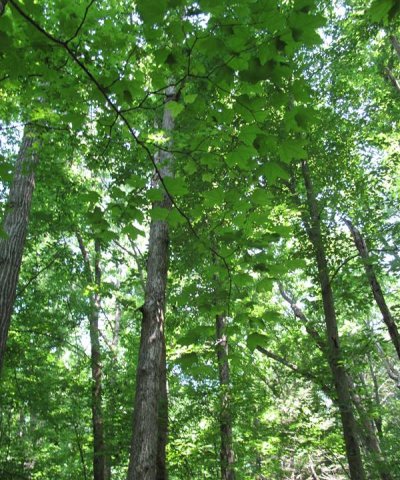
Figure 11. Canopy cover
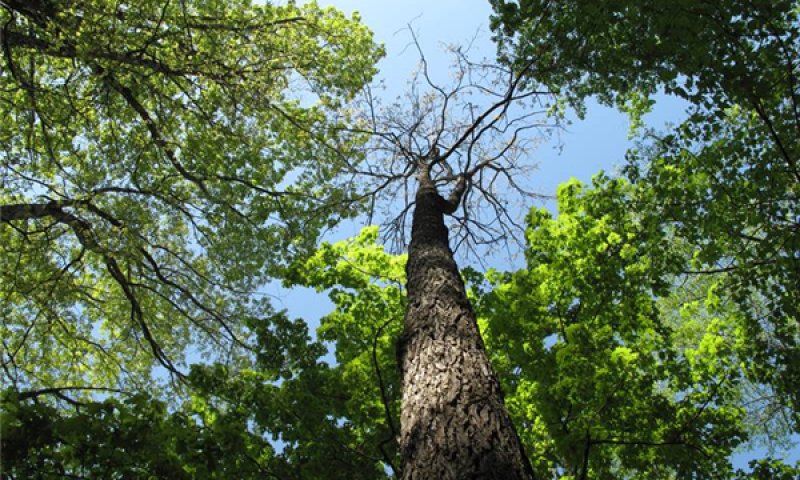
Figure 12. Overstory in spring
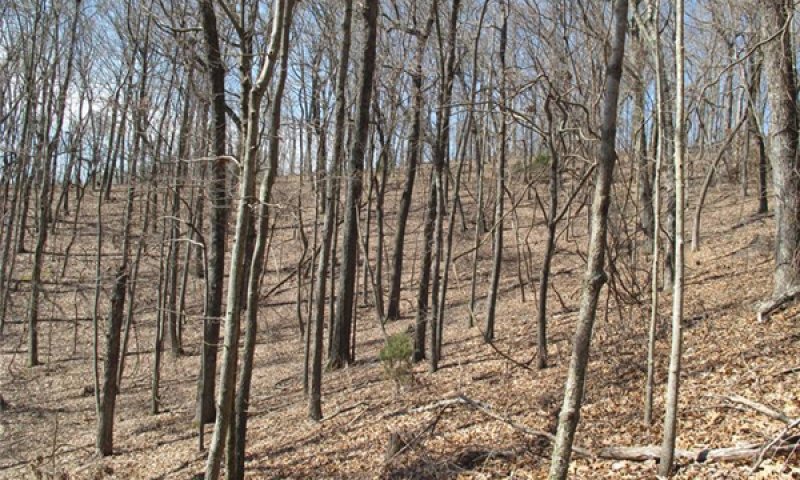
Figure 13. Overstory in winter

Figure 14. Spring understory
This phase is dominated by oaks and hickories in the overstory currently, but mid-story composition is shifting toward more shade and moisture-loving species. The understory is relatively rich in herbaceous diversity (including vines) but tree regeneration overwhelmingly favors the shade-tolerant species. For this phase to regenerate back to oak and hickory, numerous complex and site-specific factors may be necessary. These include acorn production, seedling establishment, advanced regeneration from seedlings, and timely release (Brose et al., 2013). Several types of management can be employed to this end including prescribed fire, mechanical and chemical competition control, site preparation, and planting. However, depending on the stand and its history, management for oak/hickory is typically intensive and often requires multiple treatments over time (~10 - 25 years), (Loftis, 2004). Without intensive management, in most cases, stands will naturally succeed to a more mesophytic forest type dominated by shade tolerant species (the maples and American beech). Dendroecology studies in nearby, very similar old-growth forest stands indicate that oak species have dominated stands for the past 300 years. They speculate that the recent proliferation of maples in the understory will inhibit regeneration of oak and pine under the current disturbance regime (Hart et al., 2012). Oak and hickory can regenerate in canopy gaps formed by uprooted trees, but only on very dry sites, indicating that gap-phase dynamics will favor maple overall (Hart and Kupfer, 2011). The American chestnut was an important part of this ecological site prior to decimation by the chestnut blight, but it is unclear how abundant it would have been. Colloquial estimates based on local names like "Chestnut Ridge" indicate that it may have been prolific. Sprouts from old chestnut stumps were noted often during field sampling. Sprouts rarely survive to flowering age, but can often reach as much as 8 inches diameter at breast height (DBH) before they succumb to the blight. Rarely, an American chestnut sprout will reach larger size classes and survive to flower.
Forest overstory. The overstory of this community is dominated by oak and hickory species, most commonly white oak and pignut hickory. Other species include tuliptree, black oak, northern red oak, chestnut oak, blackjack oak, shagbark hickory (Carya carolinae-septentrionalis), mockernut hickory (Carya alba), scarlet oak (Quercus coccinea) and blackgum (Nyssa sylvatica), among others.
Midstory species include sourwood (Oxydendrum arboreum), sassafras (Sassafras albidum), eastern redbud (Cercis canadensis), flowering dogwood (Cornus florida), Carolina buckthorn (Frangula caroliniana), and common serviceberry (Amelanchier arborea). Shade tolerant hardwoods are a natural part of the dynamic of this ecological site, but have become more dominant in the midstory of most stands than they might naturally be due to lack of disturbance over time. Shade tolerant species include American beech, sugar maple and red maple.
Please note that species are reported by height class. Some species occur in multiple height classes, and accordingly, have multiple entries.
Forest understory. Herbaceous diversity is high overall, but not as high as in other associated ecological sites (not yet described). Occurrence and abundance vary based on topography and are lowest on ridges and south-facing shoulders and side slopes and highest on lower north-facing side slopes. Commonly occurring species include feathery false lily of the valley (Maianthemum racemosum), littlebrownjug (Hexastylis arifolia), mayapple (Podophyllum peltatum), cutleaf toothwort (Cardamine concatenata), the bellworts (Uvularia spp.), American cancer root (Conopholis americana), trefoil (Desmodium spp.), jack in the pulpit (Arisaema triphyllum), sweet cicely (Osmorhiza spp.), trailing arbutus (Epigaea repens), the violets (Viola spp.), wood sorrel (Oxalis montana), black cohosh (Actaea racemosa), forest licorice bedstraw (Calium circaezans), and yellow wakerobin (Trillium luteum).
Native vines are important in this ecological site; although, it is unclear how much disturbance plays a role in their abundance. Poison ivy (Toxicodendron radicans), for example, tends to do better in disturbed areas and can often be an indication of a past disturbance, such as grazing, if found in proliferation. Other important vines include greenbriar (Smilax spp.), muscadine (Vitis rotundifolia), Virginia creeper (Parthenocissus quinquefolia), and crossvine (Bignonia capreolata).
Table 5. Soil surface cover
| Tree basal cover | 3-5% |
|---|---|
| Shrub/vine/liana basal cover | 1-2% |
| Grass/grasslike basal cover | 0-1% |
| Forb basal cover | 0-1% |
| Non-vascular plants | 0-1% |
| Biological crusts | 0% |
| Litter | 60-89% |
| Surface fragments >0.25" and <=3" | 0-5% |
| Surface fragments >3" | 2-15% |
| Bedrock | 0% |
| Water | 0% |
| Bare ground | 0% |
Table 6. Woody ground cover
| Downed wood, fine-small (<0.40" diameter; 1-hour fuels) | 0-5% |
|---|---|
| Downed wood, fine-medium (0.40-0.99" diameter; 10-hour fuels) | 0-5% |
| Downed wood, fine-large (1.00-2.99" diameter; 100-hour fuels) | 0-7% |
| Downed wood, coarse-small (3.00-8.99" diameter; 1,000-hour fuels) | 0-7% |
| Downed wood, coarse-large (>9.00" diameter; 10,000-hour fuels) | 0-6% |
| Tree snags** (hard***) | – |
| Tree snags** (soft***) | – |
| Tree snag count** (hard***) | 0-10 per acre |
| Tree snag count** (hard***) | 0-20 per acre |
* Decomposition Classes: N - no or little integration with the soil surface; I - partial to nearly full integration with the soil surface.
** >10.16cm diameter at 1.3716m above ground and >1.8288m height--if less diameter OR height use applicable down wood type; for pinyon and juniper, use 0.3048m above ground.
*** Hard - tree is dead with most or all of bark intact; Soft - most of bark has sloughed off.
Table 7. Canopy structure (% cover)
| Height Above Ground (ft) | Tree | Shrub/Vine | Grass/ Grasslike |
Forb |
|---|---|---|---|---|
| <0.5 | – | 11-20% | 0-1% | 0-5% |
| >0.5 <= 1 | – | 1-20% | 0-2% | 1-5% |
| >1 <= 2 | – | 0-5% | – | – |
| >2 <= 4.5 | 1-5% | 1-5% | – | – |
| >4.5 <= 13 | 1-5% | 1-5% | – | – |
| >13 <= 40 | 2-25% | – | – | – |
| >40 <= 80 | 2-45% | – | – | – |
| >80 <= 120 | 30-75% | – | – | – |
| >120 | 20-30% | – | – | – |
Community 1.2
Maple species - American beech
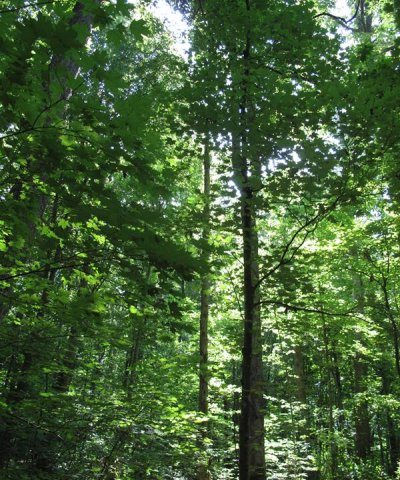
Figure 15. Maple midstory

Figure 16. Maple regeneration
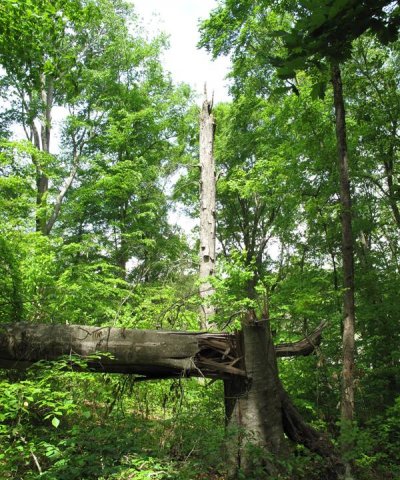
Figure 17. Gap dynamics
This community phase has not yet been attained in most cases because forests currently dominated by oaks and hickories are in transition. Without management or large-scale disturbance, stands will naturally succeed to more mesophytic species composition in the overstory and the oaks and hickories will lose their dominance over time. Small-scale gap dynamics caused by tree throws would likely be a natural part of this state and would favor the maple component in forest stands (Hart et al. 2012). A recent study of red maple on the nearby Cumberland Plateau found that canopy accession strategy and climate-growth relationships are critical factors in the shift from state 1.1 to state 1.2 (Hart et al., 2012). Red maples are gap-opportunists and can take advantage of smaller-scale disturbances such as tree-throws. Oaks in contrast, seem to have needed high frequency, intense disturbances to establish their current dominance in the forest. Red maples do best in times of cool, wet springs preceded by wet autumns and warm winters (Hart et al. 2012). Depending on climate conditions in the coming years, the weather may or may not favor their continued establishment. Red maple might also cause local environmental changes that facilitate perpetuation of favorable conditions for regeneration such as modification of understory light levels and soil characteristics (Nowacki and Abrams 2008). The denser canopies might reduce understory temperature and increase relative humidity, which would also favor the more shade-tolerant, moisture loving state (Alexander and Arthur 2010). Prescribed fire has been suggested as a management tool to reverse the trend. While it may be a useful tool in some cases and most likely in combination with other management approaches, using fire alone is unlikely to produce the desired results in most stands (Clark and Schweitzer 2013).
Forest overstory. The forest overstory is dominated by mature maples and American beech. Tree throws create small-scale gap dynamics in the forest, which favor recruitment of the maples and in some cases, yellow poplar. Oaks and hickories will always be a part of the species composition in this state, but will not be dominant.
Forest understory. Forest understory composition will be similar to community phase 1.1, dominated by native herbs, forbs, and vines. Shade tolerant trees will be present in the regeneration. Spring ephemeral wildflowers will be prolific in places.
Pathway 1.1A
Community 1.1 to 1.2


Time (typically >100 years) with little or no large-scale disturbance will favor shade tolerant, late successional species including sugar maple, red maple and American beech.
Pathway 1.2A
Community 1.2 to 1.1


Establishment of advanced oak regeneration (natural or planted) is critical to recruiting oak back into the overstory. If that is desirable, a combination of natural and managed steps will likely be required to favor oak. Depending on the residual stand, management recommendations might include timber stand improvement, mechanical or chemical treatment of unwanted species, and prescribed fire. Consultation with a professional forester is recommended prior to implementation of any management practice, especially the use of prescribed fire. Arthur et al. (2012) discusses conditions when fire should and should not be used in oak management.
Conservation practices
| Prescribed Burning | |
|---|---|
| Tree/Shrub Site Preparation | |
| Tree/Shrub Establishment | |
| Upland Wildlife Habitat Management | |
| Forest Trails and Landings | |
| Forest Stand Improvement | |
| Fuel Break | |
| Forest Management Plan - Written | |
| Forest Management Plan - Applied |
State 2
High-graded Forest State
Forests in the high graded state have been logged using diameter-limit cut methods multiple times in most cases. This results in a stand with undesirable species composition, low vigor, and poor health. The genetic quality of the forest has been depleted due to the best trees being taken out over time. While oak and hickory species are often still present in this state, individual trees are often "wolfy" and defective. These are the trees that would have been undesirable from a timber perspective and so left after multiple entries of logging. Notably, hickory has often been left because sawmills historically did not have the capability to process them.
Community 2.1
American beech - Sugar maple/Sourwood - Sassafras
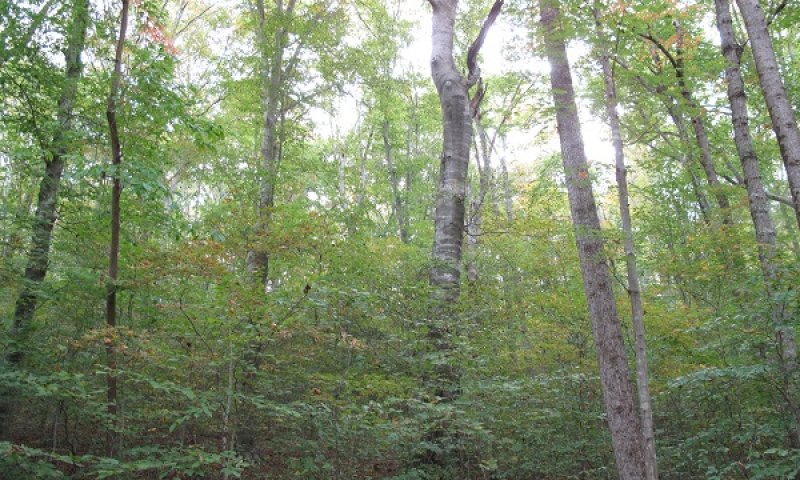
Figure 18. High graded forest
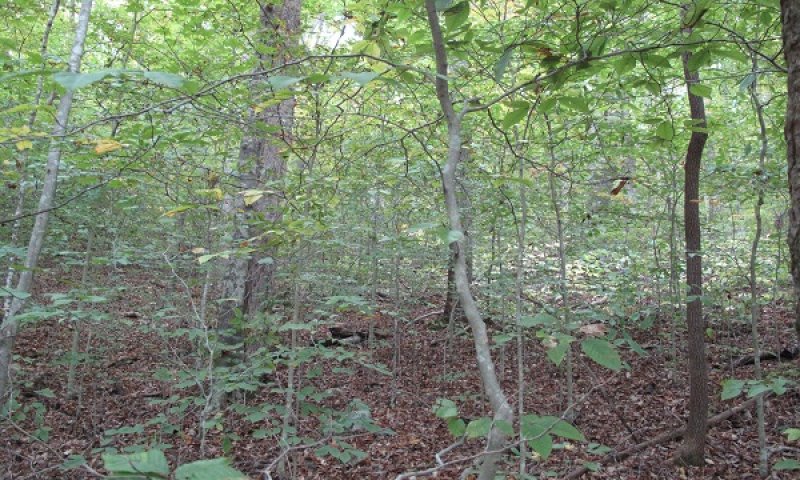
Figure 19. Mid-story

Figure 20. High graded forest in the fall
Canopies in the high graded state are generally thick enough to prevent adequate oak regeneration; more shade tolerant species such as red maple, sugar maple and American beech will predominate. Oak and hickory species that remain are typically of low genetic quality in terms of timber. Stands that have been high graded multiple times often show a conspicuous lack of white oak and northern red oak.
Forest overstory. The overstory is dominated by American beech, sugar maple, and red maple. Tuliptree and red and white oak species can be present but individuals are typically not high quality and do not represent the genetic potential of the stand, nor will they occur in large numbers. Blackgum, sourwood, sassafras, and dogwood can be important midstory species in addition to smaller maples and American beech.
Forest understory. The understory can be diverse across stands. Species noted include buckeye (Aesculus spp.), Virginia creeper (Parthenocissus quinquefolia), greenbrier (Smilax glauca, Smilax rotundifolia), grapevine (Vitis spp.), ebony spleenwort (Asplenium platyneuron), little brown jug (Hexastylis ruthii), nakedflower ticktrefoil (Desmodium nudiflorum), fragrant bedstraw (Galium triflorum), Christmas fern (Polystichum acrostichoides), etc. Forest understories will also include large numbers of regenerating tree seedlings, largely representing the overstory dominants.
Table 8. Ground cover
| Tree foliar cover | 10-25% |
|---|---|
| Shrub/vine/liana foliar cover | 0-1% |
| Grass/grasslike foliar cover | 0% |
| Forb foliar cover | 0-1% |
| Non-vascular plants | 0% |
| Biological crusts | 0% |
| Litter | 60-70% |
| Surface fragments >0.25" and <=3" | 0% |
| Surface fragments >3" | 2-5% |
| Bedrock | 0% |
| Water | 0% |
| Bare ground | 0% |
Table 9. Canopy structure (% cover)
| Height Above Ground (ft) | Tree | Shrub/Vine | Grass/ Grasslike |
Forb |
|---|---|---|---|---|
| <0.5 | 0-2% | 0-2% | 0% | 0-2% |
| >0.5 <= 1 | 0-3% | 0-4% | 0% | 0-3% |
| >1 <= 2 | 0-3% | 1-3% | 0% | 0-1% |
| >2 <= 4.5 | 0-5% | 1-5% | 0% | 0% |
| >4.5 <= 13 | 5-15% | 1-5% | 0% | 0% |
| >13 <= 40 | 5-10% | 1-5% | 0% | 0% |
| >40 <= 80 | 25-50% | 0% | 0% | 0% |
| >80 <= 120 | 15-25% | 0% | 0% | 0% |
| >120 | 0% | 0% | 0% | 0% |
State 3
Post Large-scale Disturbance Forest State
Stand initiating disturbances such as a clearcut result in a young, regenerating, even-aged forest stand.
Community 3.1
Tuliptree-red maple/sumac-sassafas/American burnweed-blackberry

Figure 21. Tornado damage
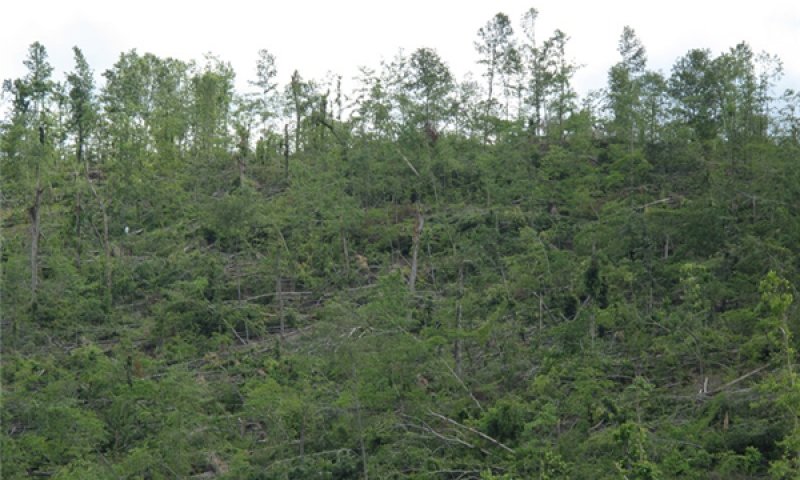
Figure 22. Tornado swath
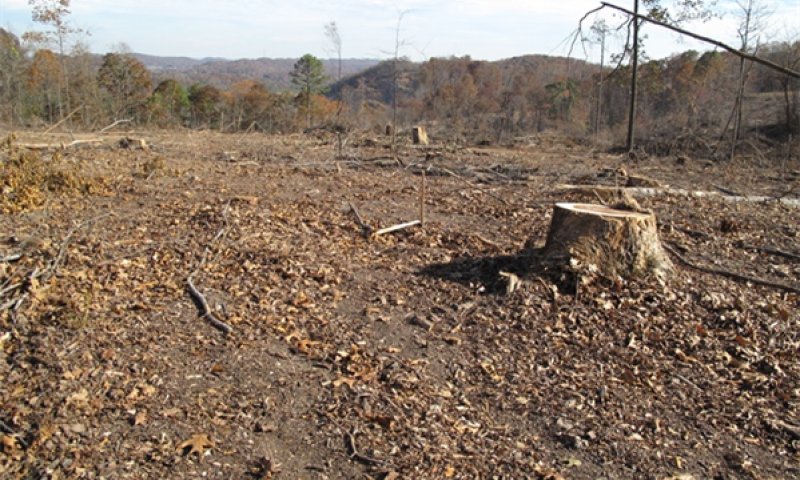
Figure 23. Small clearcut (recent)
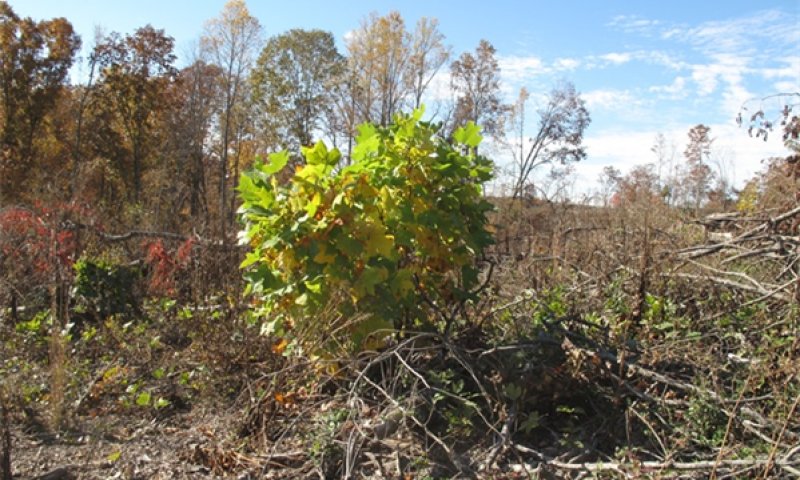
Figure 24. Tuliptree stump sprout
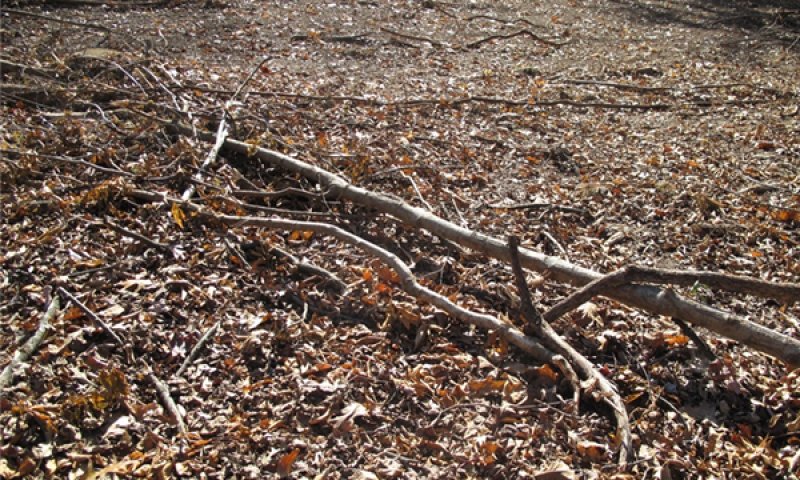
Figure 25. Litter and downed wood
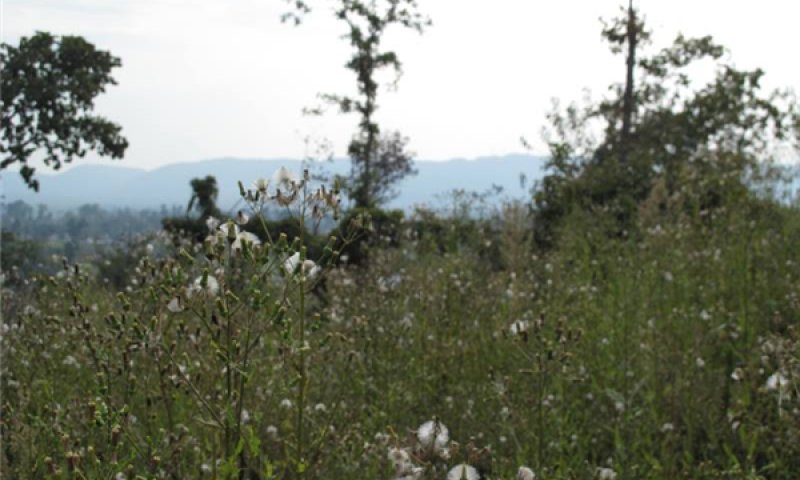
Figure 26. American burnweed, 18 months post tornado
Early after a stand-initiating disturbance, dense stands of Erechtites hieraciifolius (American burnweed) can become established and are a natural part of succession on this site. Blackberry and sumac also occur early in succession and will naturally give way to hardwoods over time. Species composition of canopy trees in young stands varies, but generally includes abundant tuliptree (McGrath and Clatterbuck, 2013). If the maples are not controlled with herbicide in the early stages of stand development, they may also be prevalent in the canopy. Other woody species include sassafras, redbud, flowering dogwood, white ash, sourwood, black gum, and Carolina buckthorn, among others. Oak species will generally regenerate by sprouting. White oak can live for long periods as an overtopped tree. It responds to quick release and so can eventually recover its dominant position in the stand canopy. Other advanced-succession species, which will become important in older stands include most of the other upland oaks, blackgum, red maple, and American beech. Maple and beech are natural components of upland mixed hardwoods. However, if they are not controlled in the early stages of stand development, oaks will have difficulty competing in stands that were severely high-graded. If natural regeneration does not produce enough oaks, artificial regeneration (i.e., planting) may be needed.
Forest overstory. Depending on the successional stage and the stand composition prior to disturbance, yellow poplar will dominate young stands giving way to mixed hardwoods over time. In disturbances where some standing trees remain, such as a typical tornado swath, they will influence the future composition of the stand.
Forest understory. Dense American burnweed can dominate this site early after a disturbance. Pokeberry, poison ivy, muscadine, sumac species, and blackberry are also important in this very early successional stage. Over time, shrub and tree seedlings and sprouts will become more important, eventually pushing into the overstory and assuming dominance of the site.
Table 10. Soil surface cover
| Tree basal cover | 5-10% |
|---|---|
| Shrub/vine/liana basal cover | 5-15% |
| Grass/grasslike basal cover | 0-1% |
| Forb basal cover | 5-50% |
| Non-vascular plants | 0% |
| Biological crusts | 0% |
| Litter | 5-50% |
| Surface fragments >0.25" and <=3" | 15-25% |
| Surface fragments >3" | 3-5% |
| Bedrock | 0% |
| Water | 0% |
| Bare ground | 1-10% |
Table 11. Woody ground cover
| Downed wood, fine-small (<0.40" diameter; 1-hour fuels) | 0-5% |
|---|---|
| Downed wood, fine-medium (0.40-0.99" diameter; 10-hour fuels) | 0-10% |
| Downed wood, fine-large (1.00-2.99" diameter; 100-hour fuels) | 0-10% |
| Downed wood, coarse-small (3.00-8.99" diameter; 1,000-hour fuels) | 0-20% |
| Downed wood, coarse-large (>9.00" diameter; 10,000-hour fuels) | 0-5% |
| Tree snags** (hard***) | – |
| Tree snags** (soft***) | – |
| Tree snag count** (hard***) | |
| Tree snag count** (hard***) |
* Decomposition Classes: N - no or little integration with the soil surface; I - partial to nearly full integration with the soil surface.
** >10.16cm diameter at 1.3716m above ground and >1.8288m height--if less diameter OR height use applicable down wood type; for pinyon and juniper, use 0.3048m above ground.
*** Hard - tree is dead with most or all of bark intact; Soft - most of bark has sloughed off.
State 4
Grazed Forest State
This state represents a condition resulting from uncontrolled access to a forest by livestock and is not meant to address plant community changes as a result of prescribed grazing, which can be quite different.
Community 4.1
White oak-sweetgum/Eastern red cedar/blackberry-broomsedge

Figure 27. Grazed forest state

Figure 28. Eastern red cedar and privet in the mid-story
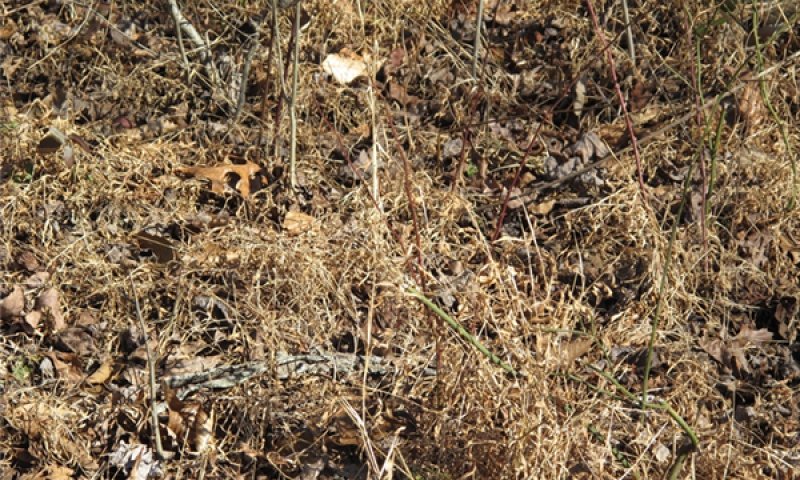
Figure 29. Broomsedge, greenbriar and blackberry understory
Grazing in forested stands results in a reduction of native ground cover plants (Johnson, 1952). Cattle will selectively graze on the plants they find most palatable. Often they leave little in the understory. Plants they avoid include greenbriar, blackberry, broomsedge (Andropogon virginicus), the privets (Ligustrum spp.), Eastern red cedar (Juniperus virginiana), and Christmas fern. Additionally, livestock find seedlings and saplings of the more valuable timber species (such as the oaks) more palatable and lower quality trees will proliferate as a result (SCS, 1992). Eastern red cedar can become invasive in grazed forest stands because cattle do not eat it. Over time, this can result in an overstory dominated by the trees that were present prior to grazing, usually including oaks, hickories, sweetgum, black cherry, tuliptree, and American beech (among others) with an Eastern red cedar (and sometimes privet) dominated midstory and very little understory. Over time if cattle are not removed overstory trees will not regenerate, which will negatively impact the future stand. Depending on the concentration of animals and frequency of grazing, trampling can expose soil which may result in erosion. Storm runoff may increase (Johnson, 1952). Compaction of the soil surface can damage the fine surface feeder tree roots. Invasive exotic plants like Japanese honeysuckle and multiflora rose are known to follow grazing disturbance into woodlands once grazers are removed. Exotic plants including the privets, honeysuckle, and multiflora rose are a problem and will persist and expand if not controlled.
Forest overstory. Overstory canopies will consist of whatever tree species were present prior to grazing. Typically white oak, scarlet oak, black oak, tuliptree, American beech, sweetgum, honeylocust, black cherry and hickory species will be present, among others.
Forest understory. Understories in this state are not diverse because most plants (including tree seedlings) are being consumed by grazing animals. Depending on the animal (cattle, goats, sheep, etc.), there is selection for the species they do not prefer to eat. Blackberry, greenbriar, broomsedge, Christmas fern, Eastern red cedar and privet are typical.
State 5
Post Agricultural Abandonment Forest State
This state results from natural succession to forest after abandonment of agricultural fields. The resulting forest will vary depending on the amount of time the land was in cultivation, the type of agricultural practice that was used (e.g., row crops, pasture, type of crop, etc.), and the degree of impact to the soil. In Georgia, parts of this state have been converted to loblolly pine (Pinus taeda) plantations, but that acreage is of relatively small extent and so it is not included as a community phase.
Community 5.1
Pine spp. - tuliptree/poison ivy
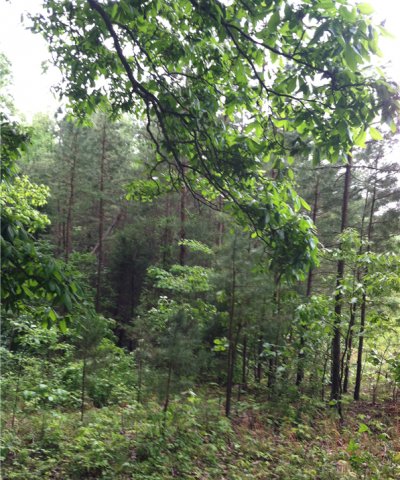
Figure 30. Young pine stand
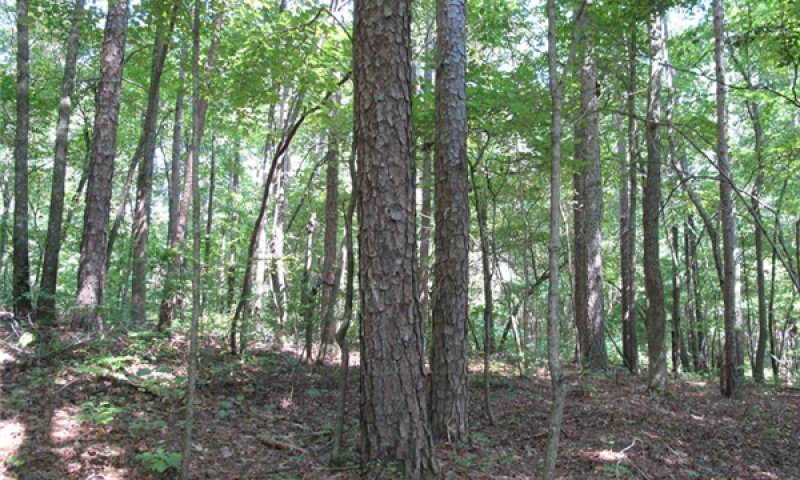
Figure 31. Older mixed pine-hardwood stand 1 in Georgia
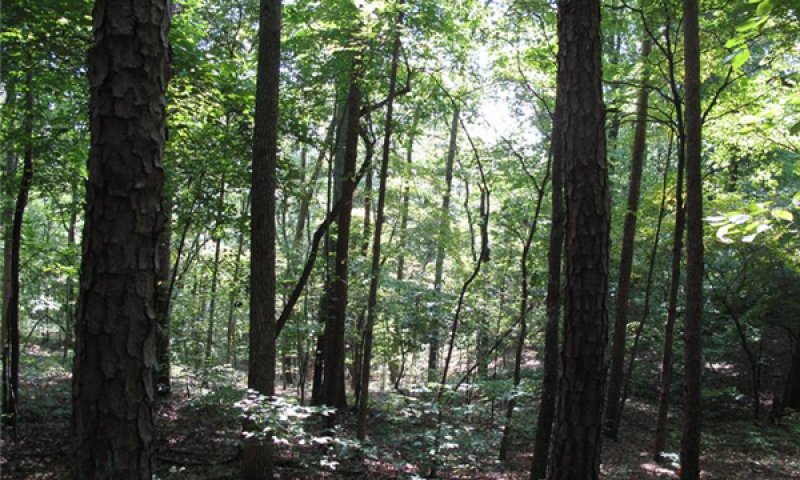
Figure 32. Older mixed pine-hardwood stand 2 in Georgia
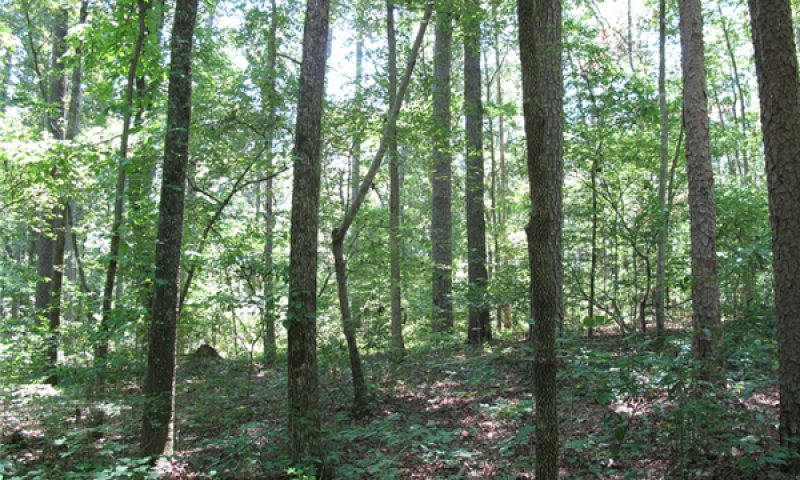
Figure 33. Older mixed pine-hardwoods in Tennessee
Pine species will often be first to colonize old fields and will dominate the first overstory of trees (Dale, 1990). In most of Tennessee, Virginia and shortleaf pines (Pinus echinata) are the dominant species. Further south in the major land resource area, loblolly pine becomes an important component of this state. Tuliptree is a commonly noted cohort in this state. Sweetgum (Liquidambar styraciflua) has been noted to increase toward the southern extent of this ecological site. Typically, over the course of time pines will naturally fall out as hardwoods move in, creating oak/pine dominated stands. Southern pine beetle (Dendroctonus frontalis) outbreaks can cause a stand-initiating disturbance in some cases, where aging pine stands are overstocked. This phase naturally succeeds to mixed hardwoods regardless. In some cases, old fields have been invaded by exotic plants such as Japanese honeysuckle (Lonicera japonica), multiflora rose (Rosa multiflora), and autumn olive (Elaeagnus umbellata). Depending on the extent of the invasion, exotic plants can impede a stand from naturally succeeding back to the reference community state. An abundance of poison ivy, a native vine, is often an indication of past disturbance and is commonly found in this phase.
Forest overstory. Overstory species will typically consist of pine species initially. As stands age, hardwoods will become more important. Eventually stands will become dominated by hardwood species, mainly oaks and hickories. Pine species included in this ecological site are Virginia pine, shortleaf pine, and loblolly pine (toward the south). Tuliptree, the maples, and sweetgum are important intermediate hardwoods.
Forest understory. Understory composition varies based on the extent of disturbance and the type of agriculture implemented. Vines often include poison ivy, Japanese honeysuckle, greenbriar, trumpet creeper, and muscadine.
Table 12. Ground cover
| Tree foliar cover | 0-7% |
|---|---|
| Shrub/vine/liana foliar cover | 0-3% |
| Grass/grasslike foliar cover | 0% |
| Forb foliar cover | 0-1% |
| Non-vascular plants | 0% |
| Biological crusts | 0% |
| Litter | 50-70% |
| Surface fragments >0.25" and <=3" | 0-1% |
| Surface fragments >3" | 0% |
| Bedrock | 0% |
| Water | 0% |
| Bare ground | 0% |
State 6
Cleared Grassland State
This state represents a once-forested area now cleared for pasture. Most pastures are very old and have been established for a long time. Management practices focus primarily on maintaining healthy pasture conditions rather than new pasture establishment, although that is certainly an option. Balancing stocking rates, grazing rotation, and nutrient inputs are the primary management concerns. In general, pasture management recommendations focus on maximizing desirable forage species to outcompete undesirable or weedy species. Production practices that result in overgrazing and low fertility levels favor emergence, propagation, and growth of weeds (Green et al., 2006). Effective pasture management includes the following practices: - maintaining proper soil pH and fertility levels - using controlled grazing practices - mowing at proper timing and stage of maturity - allowing new seedlings to become well established before use, and - renovating pastures when needed (Green et al. 2006). Tennessee has developed a list of desirable species, intermediate species and undesirable species for use in a Pasture Condition Scoresheet, which can be used to develop management recommendations on a site by site basis. District Conservationists as well as the State Grazing Specialist can be consulted to assist in developing management recommendations. Perilla (Perilla frutescens) mint is an exotic, invasive weed that has become a major problem in many pastures. It causes more cattle deaths (in Tennessee) than any other toxic plant (Steckel and Rhodes, 2007). Keeping a ready supply of quality feed available for farm animals in the late summer and early fall will help to minimize the risk to livestock. Cattle will not normally feed on perilla unless there is a shortage of other feed.
Community 6.1
Orchardgrass - tall fescue
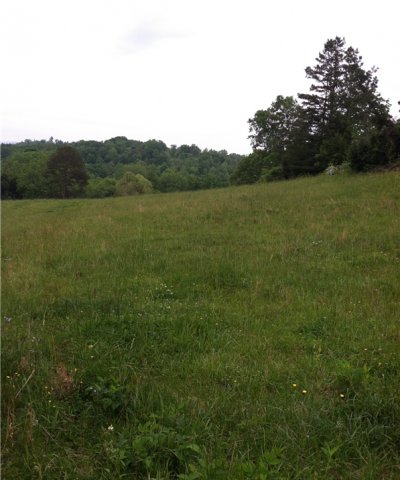
Figure 34. Pasture
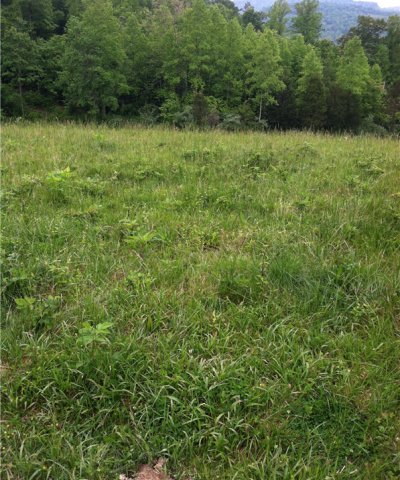
Figure 35. Pasture landscape
The dominance of orchardgrass (Dactylis glomerata), red clover (Trifolium pratense), and tall fescue (Schedonorus arundinaceus) in this community phase indicate that nutrient levels are adequate, and grazing rotations are long enough to allow pasture plants to recover. Overstocking and infrequent pasture rotation will allow weedier species to invade, such as nimblewill and rush.
Forest overstory. The overstory in the grassland state is minimal and consists of a few trees growing along the parameter of pastures, and scattered shade trees within pastures.
Forest understory. Ideally, pastures in the grassland state would be primarily composed of tall fescue, red clover, and orchardgrass. Numerous other plants could be present in varying numbers depending on the objectives and management approaches of the landowner.
Table 13. Ground cover
| Tree foliar cover | 0-2% |
|---|---|
| Shrub/vine/liana foliar cover | 0-2% |
| Grass/grasslike foliar cover | 60-70% |
| Forb foliar cover | 20-30% |
| Non-vascular plants | 0% |
| Biological crusts | 0% |
| Litter | 0-5% |
| Surface fragments >0.25" and <=3" | 0-3% |
| Surface fragments >3" | 0-15% |
| Bedrock | 0% |
| Water | 0% |
| Bare ground | 0-2% |
Community 6.2
Tall fescue - nimblewill
This community phase is transitional to a more degraded phase. While some desirable pasture plants are still present [tall fescue, white clover (Trifolium repens)], undesirable species such as nimblewill (Muhlenbergia schreberi), rush (Carex spp.), cinquefoil (Potentilla spp.), thistle (Cirsium spp.) and little barley (Hordeum pusillum) will begin to proliferate. Heavy grazing pressure may favor weedy species over grass (Rhodes and Phillips, 2012). Just removing or reducing livestock will not always be enough to restore desirable conditions after a point. Some type of nutrient improvement may also be needed.
Community 6.3
Multiflora rose - blackberry spp.
Pastures with a history of overgrazing can be susceptible to invasion by weedy plants, brambles, and small trees if grazing pressure is reduced and nothing further is done to improve the site. Indicator plants for this phase include blackberry, broomsedge, and multi-flora rose. Clipping undesirable plants and adding nutrient input can help pastures in this phase recover. Goats, mowing and herbicide can be useful for clearing unwanted plants.
Pathway 1.1A
Community 6.1 to 6.2
Overstocked pasture with infrequent rotation.
Pathway 2.2B
Community 6.2 to 6.1
Rotational grazing with a longer recovery period and higher grazing height; improved fertility.
Pathway 2.2A
Community 6.2 to 6.3
Overgrazed; low fertility
Pathway 3.3A
Community 6.3 to 6.2
Clipping pasture with nutrient improvement or controlled grazing.
Transition T1A
State 1 to 2
Selective harvesting and high grading multiple times results in degradation of forest stand quality in terms of altered species composition, forest structure, and genetic fitness. Diameter limit cuts, incorrectly implemented, remove the biggest and best trees and leave those of lowest quality in terms of both timber and ecology.
Transition T1B
State 1 to 3
Large-scale, stand replacing disturbance (natural or human-caused) such as a catastrophic fire, tornado, ice storm or management practices such as clearcutting will result in the majority of the overstory being removed. This effectively hits the reset button on natural succession and the stand begins to regenerate. Advanced oak regeneration must be present for oak to be well represented in the next stand. In some cases, competition control will also be necessary.
Transition T1C
State 1 to 4
Uncontrolled access by livestock and subsequent browsing and selective removal of desirable trees can result in loss of hardwood tree species and invasion by invasive, exotic plants. In some cases, soil compaction and erosion can become a problem.
Transition T1D
State 1 to 6
Forest clearing, herbicide application, and establishment of pasture plants, hay or crops will convert forested stands to a grassland state. Most pastures in this site are old and were converted many years ago.
Restoration pathway R2A
State 2 to 3
Stand initiating disturbance such as a silvicultural clearcut, tornado, major ice storm or in rare cases, a really hot wildfire, will effectively push the "reset" button on succession, allowing superior stock to regain dominance in most cases. Disturbance loving species like the oaks will typically respond well to this. However, where seed banks and seed sources are severely depleted, oaks may need to be planted if they are desirable. Fire has varying effects, depending on the intensity of the fire and stand conditions prior to burning. Typically, pine species would initially colonize burned areas before other species.
Conservation practices
| Early Successional Habitat Development/Management | |
|---|---|
| Forest Stand Improvement | |
| Forest Management Plan - Written | |
| Forest Management Plan - Applied |
Restoration pathway R3A
State 3 to 1
Favor desirable species such as the oaks by treating sprouts and seedlings or saplings of undesirable species (i.e., red maple) with herbicide. Multiple herbicide treatments may be merited. Follow-up treatments such as thinning or crop tree release might be needed, depending on management objectives and stand conditions.
Conservation practices
| Forest Stand Improvement | |
|---|---|
| Forest Management Plan - Written | |
| Forest Management Plan - Applied |
Restoration pathway R4A
State 4 to 1
Remove livestock, control weedy species, and conduct site-based forest management over time. In most cases, natural succession will occur if invasive plants, including Eastern red cedar, are controlled. Tree planting with desirable species may often be merited. In most cases, time and natural processes will heal any soil compaction caused by grazing.
Conservation practices
| Fence | |
|---|---|
| Tree/Shrub Site Preparation | |
| Tree/Shrub Establishment | |
| Forest Stand Improvement | |
| Invasive Plant Species Control | |
| Forest Management Plan - Written | |
| Forest Management Plan - Applied |
Transition T4A
State 4 to 6
Mechanical vegetation control and herbicide application will likely be needed to keep exotic plant species from becoming problematic in newly established pastures. Seeding with desirable species and fertilizing will be necessary to establish pasture conditions. Rotational grazing can be used as a management tool to achieve goals.
Restoration pathway R5B
State 5 to 1
Allowing natural succession to take place over time will most often result in a mixture of oak and pine, which will eventually turn into an oak/hickory mixed stand. In some cases, exotic plant control (mechanical, chemical, etc.) may be merited. Where necessary, oak planting or planting some other desirable species could be beneficial. If planting is done, control of competition through several mechanical and chemical treatments may be necessary for the best results.
Transition T5A
State 5 to 3
When pine naturally colonizes abandoned agricultural land, the result can be establishment of overstocked pine stands (~40 years). These stands are attractive to southern pine beetle, which has naturally occurring outbreaks in the Southeast periodically. Pine beetle kills result in loss of pine in the overstory (Dale 1990) and can be stand replacing in some cases.
Restoration pathway R5A
State 5 to 6
Land clearing, seeding, fertilizing, and prescribed grazing on a site by site basis will help push the phase back to pasture. Control of invasive exotic plant species and poison ivy may be merited. Control methods typically include herbicide application and mechanical control, such as mowing.
Transition T6A
State 6 to 5
Abandonment
Additional community tables
Table 14. Community 1.1 forest overstory composition
| Common name | Symbol | Scientific name | Nativity | Height (ft) | Canopy cover (%) | Diameter (in) | Basal area (square ft/acre) |
|---|---|---|---|---|---|---|---|
|
Tree
|
|||||||
| pignut hickory | CAGL8 | Carya glabra | Native | 30–65 | 5–50 | 4.2–20 | – |
| white oak | QUAL | Quercus alba | Native | 50–100 | 1–50 | 7–32.1 | – |
| tuliptree | LITU | Liriodendron tulipifera | Native | 50–85 | 1–40 | 9.6–22.5 | – |
| northern red oak | QURU | Quercus rubra | Native | 50–100 | 5–25 | 21–27 | – |
| sugar maple | ACSA3 | Acer saccharum | Native | 20–60 | 10–25 | 3.4–25 | – |
| black oak | QUVE | Quercus velutina | Native | 50–105 | 1–20 | 9.8–25 | – |
| American beech | FAGR | Fagus grandifolia | Native | 40–80 | 6–20 | 6.5–23.4 | – |
| sourwood | OXAR | Oxydendrum arboreum | Native | 20–40 | 5–20 | 4.3–9.5 | – |
| red maple | ACRU | Acer rubrum | Native | 20–50 | 1–10 | 2–25 | – |
| blackgum | NYSY | Nyssa sylvatica | Native | 20–45 | 1–5 | 2.6–13.2 | – |
| sassafras | SAAL5 | Sassafras albidum | Native | 5–20 | 0–2 | 3.8–4.2 | – |
| eastern redcedar | JUVI | Juniperus virginiana | Native | 5–20 | 0–1 | 0–2.9 | – |
Table 15. Community 1.1 forest understory composition
| Common name | Symbol | Scientific name | Nativity | Height (ft) | Canopy cover (%) | |
|---|---|---|---|---|---|---|
|
Grass/grass-like (Graminoids)
|
||||||
| panicgrass | PANIC | Panicum | Native | 0–0.5 | 0–1 | |
|
Forb/Herb
|
||||||
| littlebrownjug | HEAR6 | Hexastylis arifolia | Native | 0–0.5 | 1–5 | |
| mayapple | POPE | Podophyllum peltatum | Native | 0–1 | 1–5 | |
| feathery false lily of the valley | MARAR | Maianthemum racemosum ssp. racemosum | Native | 0–1 | 1–2 | |
| sweetroot | OSMOR | Osmorhiza | Native | 0–1 | 0–1 | |
| mountain woodsorrel | OXMO | Oxalis montana | Native | 0–0.3 | 0–1 | |
| cankerweed | PRSE | Prenanthes serpentaria | Native | 1–2 | 0–1 | |
| trillium | TRILL | Trillium | Native | 0–0.5 | 0–1 | |
| bellwort | UVULA | Uvularia | Native | 0–0.5 | 0–1 | |
| Jack in the pulpit | ARTR | Arisaema triphyllum | Native | 0–0.5 | 0–1 | |
| ticktrefoil | DESMO | Desmodium | Native | 0–0.5 | 0–1 | |
| trailing arbutus | EPRE2 | Epigaea repens | Native | 0–0.1 | 0–1 | |
| licorice bedstraw | GACI2 | Galium circaezans | Native | 0–0.5 | 0–1 | |
| violet | VIOLA | Viola | Native | 0–0.5 | 0–1 | |
| black bugbane | ACRAR | Actaea racemosa var. racemosa | Native | 0–1 | 0–1 | |
|
Fern/fern ally
|
||||||
| Christmas fern | POAC4 | Polystichum acrostichoides | Native | 0–2 | 1–3 | |
|
Shrub/Subshrub
|
||||||
| paper mulberry | BRPA4 | Broussonetia papyrifera | Introduced | 1–13 | 0–1 | |
| farkleberry | VAAR | Vaccinium arboreum | Native | 2–4.5 | 0–1 | |
| farkleberry | VAAR | Vaccinium arboreum | Native | 4.5–13 | 0–1 | |
| farkleberry | VAAR | Vaccinium arboreum | Native | 0.5–1 | 0–1 | |
| farkleberry | VAAR | Vaccinium arboreum | Native | 1–2 | 0–1 | |
| red buckeye | AEPA | Aesculus pavia | Native | 1–4 | 0–1 | |
| Chinese privet | LISI | Ligustrum sinense | Introduced | 0–0.5 | 0–1 | |
|
Tree
|
||||||
| red maple | ACRU | Acer rubrum | Native | 0–0.5 | 1–10 | |
| eastern redbud | CECA4 | Cercis canadensis | Native | 0–0.5 | 1–5 | |
| eastern redbud | CECA4 | Cercis canadensis | Native | 4.5–13 | 1–5 | |
| sugar maple | ACSA3 | Acer saccharum | Native | 1–2 | 1–5 | |
| sugar maple | ACSA3 | Acer saccharum | Native | 2–4.5 | 1–5 | |
| sugar maple | ACSA3 | Acer saccharum | Native | 4.5–13 | 1–5 | |
| red maple | ACRU | Acer rubrum | Native | 4.5–13 | 1–4 | |
| American beech | FAGR | Fagus grandifolia | Native | 2–4 | 2–4 | |
| black oak | QUVE | Quercus velutina | Native | 1–2 | 2–4 | |
| pignut hickory | CAGL8 | Carya glabra | Native | 0–0.5 | 1–3 | |
| pignut hickory | CAGL8 | Carya glabra | Native | 4.5–13 | 1–3 | |
| sugar maple | ACSA3 | Acer saccharum | Native | 0–0.5 | 1–3 | |
| sugar maple | ACSA3 | Acer saccharum | Native | 0.5–1 | 1–2 | |
| sourwood | OXAR | Oxydendrum arboreum | Native | 0–0.5 | 0–2 | |
| white ash | FRAM2 | Fraxinus americana | Native | 0.5–1 | 1–2 | |
| pignut hickory | CAGL8 | Carya glabra | Native | 1–2 | 0–2 | |
| blackgum | NYSY | Nyssa sylvatica | Native | 4.5–13 | 1–2 | |
| American beech | FAGR | Fagus grandifolia | Native | 0.5–1 | 1–2 | |
| American beech | FAGR | Fagus grandifolia | Native | 4.5–13 | 1–2 | |
| black oak | QUVE | Quercus velutina | Native | 0–0.5 | 0–1 | |
| black oak | QUVE | Quercus velutina | Native | 0.5–1 | 0–1 | |
| elm | ULMUS | Ulmus | Native | 5–13 | 0–1 | |
| common hackberry | CEOC | Celtis occidentalis | – | 0.5–1 | 0–1 | |
| pawpaw | ASTR | Asimina triloba | Native | 5–13 | 0–1 | |
| white oak | QUAL | Quercus alba | Native | 0–0.5 | 0–1 | |
| black cherry | PRSE2 | Prunus serotina | Native | 0–0.5 | 0–1 | |
| American beech | FAGR | Fagus grandifolia | Native | 1–2 | 0–1 | |
| pignut hickory | CAGL8 | Carya glabra | Native | 2–4.5 | 0–1 | |
| blackgum | NYSY | Nyssa sylvatica | Native | 0–0.5 | 0–1 | |
| red maple | ACRU | Acer rubrum | Native | 0.5–1 | 0–1 | |
| red maple | ACRU | Acer rubrum | Native | 1–2 | 0–1 | |
| red maple | ACRU | Acer rubrum | Native | 2–4.5 | 0–1 | |
| sourwood | OXAR | Oxydendrum arboreum | Native | 0.5–1 | 0–1 | |
| sourwood | OXAR | Oxydendrum arboreum | Native | 2–4.5 | 0–1 | |
| sourwood | OXAR | Oxydendrum arboreum | Native | 4.5–13 | 0–1 | |
| sassafras | SAAL5 | Sassafras albidum | Native | 0–0.5 | 0–1 | |
| sassafras | SAAL5 | Sassafras albidum | Native | 0.5–1 | 0–1 | |
| sassafras | SAAL5 | Sassafras albidum | Native | 1–2 | 0–1 | |
| sassafras | SAAL5 | Sassafras albidum | Native | 2–4.5 | 0–1 | |
| sweetgum | LIST2 | Liquidambar styraciflua | Native | 0–0.5 | 0–1 | |
| sweetgum | LIST2 | Liquidambar styraciflua | Native | 1–2 | 0–1 | |
| sweetgum | LIST2 | Liquidambar styraciflua | Native | 2–4.5 | 0–1 | |
| white ash | FRAM2 | Fraxinus americana | Native | 0–0.5 | 0–1 | |
| white ash | FRAM2 | Fraxinus americana | Native | 1–2 | 0–1 | |
| white ash | FRAM2 | Fraxinus americana | Native | 2–4.5 | 0–1 | |
| tuliptree | LITU | Liriodendron tulipifera | Native | 0–0.5 | 0–1 | |
| tuliptree | LITU | Liriodendron tulipifera | Native | 0.5–1 | 0–1 | |
| tuliptree | LITU | Liriodendron tulipifera | Native | 1–2 | 0–1 | |
| yellow buckeye | AEFL | Aesculus flava | Native | 2–4.5 | 0–1 | |
| flowering dogwood | COFL2 | Cornus florida | Native | 0–0.5 | 0–1 | |
| flowering dogwood | COFL2 | Cornus florida | Native | 0.5–1 | 0–1 | |
| flowering dogwood | COFL2 | Cornus florida | Native | 1–2 | 0–1 | |
| flowering dogwood | COFL2 | Cornus florida | Native | 2–4.5 | 0–1 | |
| northern red oak | QURU | Quercus rubra | Native | 0–0.5 | 0–1 | |
| Carolina buckthorn | FRCA13 | Frangula caroliniana | Native | 4.5–13 | 0–1 | |
| slippery elm | ULRU | Ulmus rubra | Native | 0.5–2 | 0–1 | |
|
Vine/Liana
|
||||||
| muscadine | VIRO3 | Vitis rotundifolia | Native | 0–2 | 1–5 | |
| Virginia creeper | PAQU2 | Parthenocissus quinquefolia | Native | 0–13 | 1–3 | |
| greenbrier | SMILA2 | Smilax | Native | 0–5 | 1–2 | |
| Japanese honeysuckle | LOJA | Lonicera japonica | Introduced | 0–1 | 0.5–2 | |
| crossvine | BICA | Bignonia capreolata | Native | 0–5 | 1–2 | |
| Oriental bittersweet | CEOR7 | Celastrus orbiculatus | Introduced | 0–1 | 0–1 | |
| winter creeper | EUFO5 | Euonymus fortunei | Introduced | 0–1 | 0–1 | |
| eastern poison ivy | TORA2 | Toxicodendron radicans | Native | 0–13 | 0–1 | |
|
Nonvascular
|
||||||
| American cancer-root | COAM | Conopholis americana | Native | 0–0.5 | 1–5 | |
Table 16. Community 2.1 forest overstory composition
| Common name | Symbol | Scientific name | Nativity | Height (ft) | Canopy cover (%) | Diameter (in) | Basal area (square ft/acre) |
|---|---|---|---|---|---|---|---|
|
Tree
|
|||||||
| tuliptree | LITU | Liriodendron tulipifera | Native | 50–80 | – | 10–15 | – |
| American beech | FAGR | Fagus grandifolia | Native | 35–90 | – | 25–35 | – |
| sugar maple | ACSA3 | Acer saccharum | Native | 20–30 | – | 2–5 | – |
| American beech | FAGR | Fagus grandifolia | Native | 15–30 | – | 5–10 | – |
| flowering dogwood | COFL2 | Cornus florida | Native | 15–20 | – | 2–3 | – |
| sourwood | OXAR | Oxydendrum arboreum | Native | 15–20 | – | 2–5 | – |
Table 17. Community 3.1 forest overstory composition
| Common name | Symbol | Scientific name | Nativity | Height (ft) | Canopy cover (%) | Diameter (in) | Basal area (square ft/acre) |
|---|---|---|---|---|---|---|---|
|
Tree
|
|||||||
| white oak | QUAL | Quercus alba | Native | – | – | 2–5 | – |
| tuliptree | LITU | Liriodendron tulipifera | Native | – | – | – | – |
| pignut hickory | CAGL8 | Carya glabra | Native | – | – | 2–5 | – |
| flowering dogwood | COFL2 | Cornus florida | Native | – | – | 2 | – |
Table 18. Community 3.1 forest understory composition
| Common name | Symbol | Scientific name | Nativity | Height (ft) | Canopy cover (%) | |
|---|---|---|---|---|---|---|
|
Forb/Herb
|
||||||
| American pokeweed | PHAM4 | Phytolacca americana | Native | – | – | |
| common mullein | VETH | Verbascum thapsus | Introduced | – | – | |
|
Shrub/Subshrub
|
||||||
| blackberry | RUBUS | Rubus | Native | – | – | |
| winged sumac | RHCO | Rhus copallinum | Native | – | – | |
| sumac | RHUS | Rhus | Native | – | – | |
|
Tree
|
||||||
| black cherry | PRSE2 | Prunus serotina | Native | – | – | |
| sassafras | SAAL5 | Sassafras albidum | Native | – | – | |
| white ash | FRAM2 | Fraxinus americana | Native | – | – | |
| Carolina buckthorn | FRCA13 | Frangula caroliniana | Native | – | – | |
| black oak | QUVE | Quercus velutina | Native | – | – | |
|
Vine/Liana
|
||||||
| Virginia creeper | PAQU2 | Parthenocissus quinquefolia | Native | – | – | |
| eastern poison ivy | TORA2 | Toxicodendron radicans | Native | – | – | |
| muscadine | VIRO3 | Vitis rotundifolia | Native | – | – | |
Table 19. Community 5.1 forest overstory composition
| Common name | Symbol | Scientific name | Nativity | Height (ft) | Canopy cover (%) | Diameter (in) | Basal area (square ft/acre) |
|---|---|---|---|---|---|---|---|
|
Tree
|
|||||||
| loblolly pine | PITA | Pinus taeda | Native | 70–80 | – | 8–15 | – |
| southern red oak | QUFA | Quercus falcata | Native | 60–80 | – | 13–20 | – |
| northern red oak | QURU | Quercus rubra | Native | – | – | – | – |
| red maple | ACRU | Acer rubrum | Native | – | – | 2–5 | – |
| tuliptree | LITU | Liriodendron tulipifera | Native | – | – | – | – |
| flowering dogwood | COFL2 | Cornus florida | Native | – | – | 4 | – |
| Virginia pine | PIVI2 | Pinus virginiana | Native | – | – | – | – |
| shortleaf pine | PIEC2 | Pinus echinata | Native | – | – | – | – |
| black oak | QUVE | Quercus velutina | Native | – | – | – | – |
| sweetgum | LIST2 | Liquidambar styraciflua | Native | – | – | – | – |
| southern shagbark hickory | CACA38 | Carya carolinae-septentrionalis | Native | – | – | – | – |
Table 20. Community 5.1 forest understory composition
| Common name | Symbol | Scientific name | Nativity | Height (ft) | Canopy cover (%) | |
|---|---|---|---|---|---|---|
|
Tree
|
||||||
| sourwood | OXAR | Oxydendrum arboreum | Native | – | – | |
| red maple | ACRU | Acer rubrum | Native | – | – | |
| northern red oak | QURU | Quercus rubra | Native | – | – | |
| pignut hickory | CAGL8 | Carya glabra | Native | – | – | |
| serviceberry | AMELA | Amelanchier | Native | – | – | |
|
Tree Fern
|
||||||
| cat greenbrier | SMGL | Smilax glauca | Native | – | – | |
|
Vine/Liana
|
||||||
| trumpet creeper | CARA2 | Campsis radicans | Native | – | – | |
| muscadine | VIRO3 | Vitis rotundifolia | Native | – | – | |
Table 21. Community 6.1 forest overstory composition
| Common name | Symbol | Scientific name | Nativity | Height (ft) | Canopy cover (%) | Diameter (in) | Basal area (square ft/acre) |
|---|---|---|---|---|---|---|---|
|
Tree
|
|||||||
| blackgum | NYSY | Nyssa sylvatica | Native | – | – | – | – |
| tuliptree | LITU | Liriodendron tulipifera | Native | – | – | – | – |
| post oak | QUST | Quercus stellata | Native | – | – | – | – |
| sugar maple | ACSA3 | Acer saccharum | Native | – | – | – | – |
| eastern redcedar | JUVI | Juniperus virginiana | Native | – | – | – | – |
| southern red oak | QUFA | Quercus falcata | Native | – | – | – | – |
| pignut hickory | CAGL8 | Carya glabra | Native | – | – | – | – |
| shagbark hickory | CAOV2 | Carya ovata | Native | – | – | – | – |
| common persimmon | DIVI5 | Diospyros virginiana | Native | – | – | – | – |
| sassafras | SAAL5 | Sassafras albidum | Native | – | – | – | – |
| Virginia pine | PIVI2 | Pinus virginiana | Native | – | – | – | – |
Table 22. Community 6.1 forest understory composition
| Common name | Symbol | Scientific name | Nativity | Height (ft) | Canopy cover (%) | |
|---|---|---|---|---|---|---|
|
Grass/grass-like (Graminoids)
|
||||||
| tall fescue | SCAR7 | Schedonorus arundinaceus | Introduced | – | – | |
| creeping bentgrass | AGST2 | Agrostis stolonifera | Introduced | – | – | |
| orchardgrass | DAGL | Dactylis glomerata | Introduced | – | – | |
| sedge | CAREX | Carex | Unknown | – | – | |
| rush | JUNCU | Juncus | Unknown | – | – | |
| field brome | BRAR5 | Bromus arvensis | Introduced | – | – | |
| panicgrass | PANIC | Panicum | Unknown | – | – | |
| broomsedge bluestem | ANVI2 | Andropogon virginicus | Native | – | – | |
| Kentucky bluegrass | POPR | Poa pratensis | Introduced | – | – | |
| Nepalese browntop | MIVI | Microstegium vimineum | Introduced | – | – | |
|
Forb/Herb
|
||||||
| red clover | TRPR2 | Trifolium pratense | Introduced | – | – | |
| suckling clover | TRDU2 | Trifolium dubium | Introduced | – | – | |
| white clover | TRRE3 | Trifolium repens | Introduced | – | – | |
| blue-eyed grass | SISYR | Sisyrinchium | Native | – | – | |
| lyreleaf sage | SALY2 | Salvia lyrata | Native | – | – | |
| wingstem | VEAL | Verbesina alternifolia | Native | – | – | |
| Queen Anne's lace | DACA6 | Daucus carota | Introduced | – | – | |
| Virginia strawberry | FRVI | Fragaria virginiana | Native | – | – | |
| cinquefoil | POTEN | Potentilla | Unknown | – | – | |
|
Shrub/Subshrub
|
||||||
| blackberry | RUBUS | Rubus | Native | – | – | |
|
Vine/Liana
|
||||||
| winter vetch | VIVI | Vicia villosa | Introduced | – | – | |
| cat greenbrier | SMGL | Smilax glauca | Native | – | – | |
| Japanese honeysuckle | LOJA | Lonicera japonica | Introduced | – | – | |
| eastern poison ivy | TORA2 | Toxicodendron radicans | Native | – | – | |
Interpretations
Animal community
The oak-hickory forests that represent the reference state provide important mast production for a variety of wildlife species. Acorns in particular are an extremely important food source for birds and mammals during the dormant season (McShea et al., 2006). Ninety-six species of birds and mammals are known to consume acorns, especially in fall and winter (Martin, 1961). Acorns produced from white oak tree species (white oak, chestnut oak, etc.) are typically more palatable than acorns from the red oak group, although red oak acorns are still an important food source, particularly in the winter season when acorns from white oak species have already been consumed. Examples of animals that consume acorns within this ecological site include insects such as the acorn weevil, birds (e.g. wild turkeys, northern bobwhite quail, woodpeckers, blue jays, crows), small mammals (e.g., chipmunks, fox squirrels, flying squirrels, rabbits, mice, voles, raccoons and opossums), and large mammals (e.g., white-tailed deer, red and gray foxes, black bear), (Dickson, 2004). Prior to its extinction, the passenger pigeon would have been an important consumer and distributor of acorns as well (Frelich and Reich, 2002).
Oak is considered a foundation species for wildlife in the eastern forest (McShea et al., 2006). However, oak species have considerable variability in acorn production (crop size from year to year), which can substantially affect the availability of mast for wildlife. Providing variety in hard and soft mast producing species can help to ensure that food is available from season to season and from year to year. Hickory nuts can also be important mast for wildlife. In fact, hickory makes up 10 to 20 percent of squirrel diets in similar systems (Apsley and Gehrt, 2006).
From a habitat perspective, oak-hickory forests are extremely important. For example, numerous birds depend on different stages of these forest systems to survive. The Appalachian region, the location of this ecological site, is the center of the summer breeding range of neotropical migratory birds. Neotropical migrants include forest-interior, forest-edge, and early-successional species and comprise 65 to 85 percent of breeding birds (Smith, 1995). The Indiana bat is the primary threatened and endangered bat species. Shaggy bark (e.g., shagbark hickory) and scaly bark (white oak) species provide excellent roosting sites for this species. The Northern long eared bat is not listed yet, but is expected to be and would also use associated trees as roosting sites.
Young (1 to 10 year post-disturbance) upland oak forests function as high-quality food patches for myriad wildlife species. Fruit producing early successional plants such as pokeweed and blackberry, young shrubs, and tree sprouts play an important role in the diets of several bird species, arthropods, and small mammals that serve as prey for numerous snake, bird, and mammal predators (Greenberg, et al. 2011). Mature stands serve as habitat for wild turkey in fall and winter where they utilize acorns as an important part of their diet. Additionally, most forest-dwelling amphibians, reptiles, birds, and mammals required at least a sawtimber stage of maturity in similar forest systems in New England (Healy, 2002).
Snags, cavity trees, and downed logs provide habitat for a wide variety of wildlife species; as such, they are important components of oak-hickory forests on this ecological site. Snags are standing dead or dying trees, and downed logs are simply logs that are on or near the forest floor. Cavity trees are live trees with holes big enough to shelter animals. This includes trees with cavities in the limbs, which can actually be more important to some wildlife species than larger hollow trees. Snags are created by lightning, storm breakage, fire, disease, insects, drought, flooding, cultural practices, among other factors that contribute to tree mortality.
Wildlife species are affected by ecological dynamics in upland oak forests to varying degrees. Management must consider all factors that could impact wildlife populations and be site-based in application. A balance of successional stages in sustainable proportions across the landscape (multiple forest age classes) with consideration for snags and cavity trees will sustain high quality food patches and habitat for wildlife overall.
Hydrological functions
Soils in forests have well developed structure, which is maintained by many factors of the forest environment. The surface of the soil is protected from raindrop impact by the forest canopy and the surface organic layers (Carmean, 1957), infiltration is generally good and runoff is low.
Long-term research on mixed hardwood forests in this region indicates that there is little long-term effect of clearcutting and other logging practices on hydrologic and water quality sustainability, especially at smaller scales (Swank et al., 2001). Harvesting increases annual water yield typically only during the first 4 to 5 years after cutting. However, harvesting practices vary and have an impact on the severity of impact to hydrologic function. For example, clear-cut size, logging techniques, and the density and condition of logging roads can all create more surface soil disturbance which results in more runoff. Following best management practices (BMPs) is a good way to avoid the negative impacts of logging to soil and water resources both in the short and long term.
Unlike the short-term effect of most forestry practices, conversion of forest land to pasture or lawn (urban use) can result in higher bulk densities and lower infiltration rates and water holding capacities in soils, which can be attributed to higher compaction associated with land management practices (Price et al., 2010). This leads to increased runoff and can negatively influence water quality. Good pasture management can reduce negative effects to some extent and should always be employed to protect soil and water quality wherever possible.
Recreational uses
Most of the Thermic Cherty Dolomite Uplands is under private ownership so public recreation opportunities are limited. However, some of the western part of the Conasauga Ranger District (Chattahoochee-Oconee National Forest) falls within this ecological site. The opportunities there include bicycling, camping and cabins, hiking, horse riding, nature viewing, off-highway vehicle riding, picnicking, and scenic driving.
Similar opportunities can be found on smaller parcels of land owned by the Tennessee Valley Authority. Several of their Small Wild Areas (SWAs) on this ecological site have hiking trails and scenic overlooks. The University of Tennessee Forest Resources AgResearch and Education Center almost entirely falls within this ecological site. There are numerous hiking trails, an Arboretum and outdoor classroom and educational nature trails available to the public, among other opportunities.
Wood products
This ecological site is dominated by forests in varying stages of succession. Most forestland is held by small, private landowners. Only a small extent of this ecological site occurs on public land. Important wood products include hardwood sawlogs (red oak, white oak, ash, tuliptree, walnut, cherry, sugar maple, and hickory), crosstie logs, hickory handle logs, white oak stave logs, hardwood pulpwood, softwood logs and veneer logs (Tennessee Forest Products Bulletin, 2013).
Supporting information
Inventory data references
30 tier 1-2 plots; 1 pasture plot (NRI); 7 tier 3 reference plots; 10 site index plots.
Other references
Alexander, Heather D. and M.A. Arthur. 2010. Implications of a predicted shift from upland oaks to red maple on forest hydrology and nutrient availability. Canadian Journal of Forest Research 40: 716-726.
Apsley, David and S. Gehert. 2006. Enhancing food (mast) production for woodland wildlife in Ohio. Extension Fact Sheet F-60-06, Ohio State University Extension, School of Natural Resources, Columbus, OH.
Arthur, Mary A., H.D. Alexander, D.C. Dey, C.J. Schweitzer, and D.L. Loftis. 2012. Refining the oak-fire hypothesis for management of oak-dominated forests of the eastern United States. Journal of Forestry 110: 257-266.
Braun, E. Lucy. 1947. Development of the Deciduous Forests of Eastern North America. Ecological Monographs 17(2): 211 - 219.
Brose, Patrick H., D.C. Dey, R.J. Phillips, and T.A. Waldrop. 2013. A meta-analysis of the fire-oak hypothesis: Does prescribed burning promote oak reproduction in eastern North America? Forest Science 59(3): 322 – 334.
Buol, Stan W., F.D. Hole, R.J. McCracken, R.J. Southard. 1997. Soil Genesis and Classification (4th ed.). Ames, Iowa: Iowa State University Press. Pp. 353 - 359.
Carmean, Willard H. 1957. The structure of forest soils. The Ohio Journal of Science 57(3): 165-168.
Case, Earl C. 1925. The valley of east Tennessee: The adjustment of industry to natural environment. Bulletin 36. Division of Geology, Nashville, Tennessee.
Chapman, Jefferson, P.A. Delcourt, P.A. Cridlebaugh, A.B. Shea, and H.R. Delcourt. 1982. Man-land interaction: 10,000 years of American Indian impact on native ecosystems in the lower little Tennessee River valley, eastern Tennessee. Southeastern Archaeology 1: 115–121.
Clark, Stacy L. and C.J. Schweitzer. 2013. Red maple (Acer rubrum) response to prescribed burning on the William B. Bankhead National Forest, Alabama. In: Guldin, James M., ed. 2013. Proceedings of the 15th biennial southern silvicultural research conference. e-Gen. Tech. Rep. SRS-GTR-175. Asheville, NC: U.S. Department of Agriculture, Forest Service, Southern Research Station. 271-276.
Condley, Brandon C. 1984. The ridge top chestnut oak forest community of the Ridge and Valley Physiographic Province and adjacent areas. M.S. Thesis. The University of Tennessee, Knoxville.
Dale, Virginia H., L.K. Mann, R.J. Olson, D.W. Johnson, and K.C. Dearstone. 1990. The long-term influence of past land use on the Walker Branch forest. Landscape Ecology 4(4): 211-224.
Delcourt, Paul. A. and H.R. Delcourt. 1998. The influence of prehistoric human-set fires on oak-chestnut forests in the southern Appalachians. Castanea 63: 337–345.
DeSelm, Hal. R. 1984. Potential national natural landmarks of the Appalachian ranges natural region: Ecological report. University of Tennessee, Knoxville.
Dickson, James G. Wildlife and upland oak forests. In: Spetich, Martin A., ed. 2004. Upland oak ecology symposium: history, current conditions, and sustainability. Gen. Tech. Rep. SRS-73. Asheville, NC: U.S. Department of Agriculture, Forest Service, Southern Research Station. 311 p.
Evans, Richard M. 1992. Soil and water conservation plan for: The University of Tennessee Forestry Experiment Station.
Green, Jonathan D., W.W. Witt, and J.R. Martin. 2006. Weed management in grass pastures, hayfields, and other farmstead sites. University of Kentucky Cooperative Extension Service publication AGR-172.
Greenberg, Catherine H., R.W. Perry, C.A. Harper, D.J. Levey, J.M. McCord. 2011. The role of recently disturbed upland hardwood forest as high quality food patches. In: Sustaining Young Forest Communities: Ecology and management of early successional habitats in the Central Hardwood Region, USA. Managing Forest Ecosystems. pp. 121–141.
Hart, Justin L., S.L. van de Gevel, and H.D. Grissino-Mayer. 2008. Forest dynamics in a natural area of the southern Ridge and Valley, Tennessee. Natural Areas Journal 28: 275–289.
Hart, Justin L. and J.A. Kupfer. 2011. Sapling richness and composition in canopy gaps of a southern Appalachian mixed Quercus forest. Journal of the Torrey Botanical Society 138(2): 207-219.
Hart, Justin L., S.L. Clark, S.J. Torreano, and M.L. Buchanan. 2012. Composition, structure, and dendroecology of an old-growth Quercus forest on the tablelands of the Cumberland Plateau, USA. Forest Ecology and Management 266: 11-24.
Hart, Justin L., M.L. Buchanan, S.L. Clark., and S.J. Torreano. 2012. Canopy accession strategies and climate-growth relationships in Acer rubrum. Forest Ecology and Management 282: 124-132.
Johnson, E.A. 1952. Effect of farm woodland grazing on watershed values in the southern Appalachian Mountains. Journal of Forestry 50(2): 109 – 113.
Keever, C. 1953. Present composition of some stands of the former oak-chestnut forest in the southern Blue Ridge Mountains. Ecology. 34: 44-54.
Loftis, David L. 2004. Upland oak regeneration and management. In: Proceedings of the Upland oak ecology symposium. USDA Forest Service, Gen. Tech. Rep. SRS-73, Southern Research Station, Asheville, NC. pp 163 - 167.
Lorimer, Craig G. 2001. Historical and ecological roles of disturbance in Eastern North American forests: 9,000 years of change. Wildlife Society Bulletin 29: 425–439.
Martin, Alexander C., H.C. Zim, and A.L. Nelson. 1961. American wildlife and plants: A guide to wildlife food habits. Dover, New York, New York, USA.
Martin, William H. 1971. Forest communities of the dissected uplands in the Great Valley of east Tennessee and their relationship to soil and topographic properties. PhD Dissertation. The University of Tennessee, Knoxville.
Martin, William H. 1989. Forest patterns in the Great Valley of Tennessee. Journal of the Tennessee Academy of Science 64(3): 137 – 143.
McEwan, Ryan W., J.M. Dyer, and N. Pederson. 2011. Multiple interacting ecosystem drivers: Toward an encompassing hypothesis of oak forest dynamics across eastern North America. Ecography 34: 244-256.
McGrath, J.C., and W. K. Clatterbuck. 2013. Assessing anthropogenic and natural disturbances: Vegetational response to similarly aged clearcut and tornado disturbances in an East Tennessee oak-hickory forest. In: Proceedings of 15th Biennial Southern Silvicultural Research Conference, Hot Springs, AR, November 18-20, 2009. e-Gen. Tech. Rep. SRS-175. Asheville, NC: USDA Forest Service, Southern Research Station. pp. 81-90.
McShea, William J., W.M. Healy, P. Devers, T. Fearer, F.H. Koch, D. Stauffer, and J. Waldon. 2007. Forestry matters: Decline of oaks will impact wildlife in hardwood forests. Journal of Wildlife Management 71(5): 1717-1728.
Nelson, Thomas C. 1955. Chestnut replacement in the southern highlands. Ecology 36(2): 352-353.
Nowacki, Gregory J. and M.D. Abrams. 2008. The demise of fire and ‘‘mesophication’’ of forests in the eastern United States. BioScience 58: 123–138.
Olson, David F. , Jr. 1959. Site index curves for upland oak in the southeast. USDA, Forest Service. Southeastern Forest Experiment Station Research Note 125.
Price, Katie, C.R. Jackson, and A.J. Parker. 2010. Variation of surficial soil hydraulic properties across land uses in the southern Blue Ridge Mountains, North Carolina, USA. Journal of Hydrology 383: 256-268.
Rhodes, G. Neil Jr., and W.P. Phillips Jr. 2012. PB1801 Weed Management in Pastures and Hay Crops, http://trace.tennessee.edu/utk_agexcrop/157.
Schlaegel, Bryce E., D.L. Kulow, and R.N. Baughman. 1969. Empirical yield tables for West Virginia yellow poplar. West Virginia University Agriculture Experiment Station Bulletin 574T.
Smith, David W. 1968. Vegetational changes in a five county area of east Tennessee during secondary succession. M.S. Thesis. The University of Tennessee, Knoxville.
Smith, David W. 1995. The southern Appalachian hardwood region. Regional Silviculture of the United States. John Wiley & Sons, Inc. New York, NY, 643, 173-225.
Steckel, Larry and N. Rhodes. 2007. Perilla mint. University of Tennessee Extension Service publication W135.
Stephenson, Steven L., H.S. Adams, and M.L. Lipford. 1991. The present distribution of American chestnut in the upland forest communities of Virginia. Bulletin of the Torrey Botanical Club 118:24-32.
Swank, Wayne T., J.M. Vose, and K.J. Elliott. 2001. Long-term hydrologic and water quality responses following commercial clearcutting of mixed hardwoods on a southern Appalachian catchment. Forest Ecology and Management 143: 163 - 178.
Tennessee Forest Products Bulletin. July - September, 2013. Volume 39(3).
Thor, Eyvind and D.D. Summers. 1971. Changes in forest composition on Big Ridge Natural Study Area, Union County, Tennessee. Castanea 36: 114-122.
Thornthwaite, Charles W. 1948. An approach toward a rational classification of climate. Geographical Review 38(1): 55-94.
United States Department of Agriculture, Soil Conservation Service. 1992. Hardwood forest grazing. Woodland Fact Sheet No. 7. Columbia, Missouri.
Williams, Samuel C. 1928. Early travels in the Tennessee country, 1540-1800: With introductions, annotations and index. The Watauga Press, Johnson City, Tennessee.
Contributors
Belinda Esham
Rangeland health reference sheet
Interpreting Indicators of Rangeland Health is a qualitative assessment protocol used to determine ecosystem condition based on benchmark characteristics described in the Reference Sheet. A suite of 17 (or more) indicators are typically considered in an assessment. The ecological site(s) representative of an assessment location must be known prior to applying the protocol and must be verified based on soils and climate. Current plant community cannot be used to identify the ecological site.
| Author(s)/participant(s) | |
|---|---|
| Contact for lead author | |
| Date | |
| Approved by | |
| Approval date | |
| Composition (Indicators 10 and 12) based on | Annual Production |
Indicators
-
Number and extent of rills:
-
Presence of water flow patterns:
-
Number and height of erosional pedestals or terracettes:
-
Bare ground from Ecological Site Description or other studies (rock, litter, lichen, moss, plant canopy are not bare ground):
-
Number of gullies and erosion associated with gullies:
-
Extent of wind scoured, blowouts and/or depositional areas:
-
Amount of litter movement (describe size and distance expected to travel):
-
Soil surface (top few mm) resistance to erosion (stability values are averages - most sites will show a range of values):
-
Soil surface structure and SOM content (include type of structure and A-horizon color and thickness):
-
Effect of community phase composition (relative proportion of different functional groups) and spatial distribution on infiltration and runoff:
-
Presence and thickness of compaction layer (usually none; describe soil profile features which may be mistaken for compaction on this site):
-
Functional/Structural Groups (list in order of descending dominance by above-ground annual-production or live foliar cover using symbols: >>, >, = to indicate much greater than, greater than, and equal to):
Dominant:
Sub-dominant:
Other:
Additional:
-
Amount of plant mortality and decadence (include which functional groups are expected to show mortality or decadence):
-
Average percent litter cover (%) and depth ( in):
-
Expected annual annual-production (this is TOTAL above-ground annual-production, not just forage annual-production):
-
Potential invasive (including noxious) species (native and non-native). List species which BOTH characterize degraded states and have the potential to become a dominant or co-dominant species on the ecological site if their future establishment and growth is not actively controlled by management interventions. Species that become dominant for only one to several years (e.g., short-term response to drought or wildfire) are not invasive plants. Note that unlike other indicators, we are describing what is NOT expected in the reference state for the ecological site:
-
Perennial plant reproductive capability:
Print Options
Sections
Font
Other
The Ecosystem Dynamics Interpretive Tool is an information system framework developed by the USDA-ARS Jornada Experimental Range, USDA Natural Resources Conservation Service, and New Mexico State University.
Click on box and path labels to scroll to the respective text.